WAIKATO GROWERS





THE COVER:
WHAT'S NEW














Most product groups and related horticulture businesses have recently had their Annual General Meetings (AGMs), with Horticulture New Zealand having had its AGM on 21 September 2022 in Nelson.
Without the annual Horticulture Conference this year, some product groups found it challenging to get their AGMs organised. Next year, we will have the Horticulture Conference again, and I would like to encourage all product groups to align with the conference, for their own technical programmes and in order to streamline AGMs, with growers already present for the conference so we get more engagement, and so quorums are not such a challenge.
At all the AGMs, growers raised concerns and expressed despair about the serious labour situation, and the need for additional migrant labour
AGMs are an important part of organisations, as they give members and shareholders the opportunity to see inside an organisation. They are also to hold directors to account regarding the work and activities of the organisation.
I am pleased to say HortNZ staff have put in a huge year – well beyond expectations – to deliver value for our members in what has been one of the most difficult years for growers and the organisation. Government policy changes have been coming thick and fast, and not always aligned with or supportive of business, along with the ongoing implications of Covid-19.
One issue that stood out at all the AGMs I attended was the frustration of growers with the labour shortage. At all the AGMs, growers raised concerns and expressed despair about the serious labour situation, and the need for additional migrant labour. And the discussion was not related to future growth, which many of us have talked about previously, but to our very survival.
Who would have ever imagined just under three years ago that a pandemic would race around the world, and result in Covid border shutdowns keeping out much needed migrant and working holiday visa workers?
It is not an issue unique to horticulture. All primary, retail, hospitality, aged care and other industries are very much struggling as well. But arguably the issue has the biggest impact on horticulture, due to our seasonal labour needs, with shortages estimated to be up to 10,000 in our sector.
Plus, it’s not just New Zealand. Every country around the world is in the same boat including the United Kingdom, Europe and the United States.
What is exceptionally frustrating is that after working like crazy to get our
crops planted and grown, we have not been able to harvest all of them, and our labour shortage has meant we have sacrificed value and not been able to realise any premium.
Horticulture employs just ten percent of all the food and fibre workforce, with a seasonal peak in March 2019 of 43,000 people. Pleasingly, within that ten percent, our workforce is very different to that of the other primary sectors, including being more diverse.

But our problem is that in horticulture, only 60 percent of our workers are Kiwis, compared to dairy at 90 percent, forestry and 95 percent, and sheep and beef farming at 99 percent.
In horticulture, unlike any other primary sector, 25 percent of our workforce are Recognised Seasonal Employer (RSE) scheme workers, and another 15 percent are working holiday visa holders or workers on other visas. So if the borders close or if there are issues in the nine Pacific nations that are part of the scheme, horticulture has a much greater risk of labour shortages than elsewhere in the primary sector.
So within this context, and taking as given that we must and are doing
We will keep fighting for the RSE scheme and for increasing the cap to what we believe is the currently required minimum of 20,000
Editors: Emily Pope
Ph: 027 617 6200
Email: emily.pope@hortnz.co.nz
Andrew Bristol
Ph: 021 021 62 021
Email: andrew.bristol@hortnz.co.nz
Advertising Manager: Debbie Pascoe
everything we can to employ New Zealanders first, it is very frustrating that our government is continuing to have very restrictive border settings compared to what other countries, including Australia, are doing.
When we talk to New Zealand government Ministers, they usually challenge and deny that our industry has such a significant labour shortage. To add insult to injury, they often say that if we only paid more, we would get the labour we need. That’s rubbish on both counts, and there is no recognition of what it takes to run a business.
I attended the RSE Voices of the Pacific conference in Wellington in late July. It was a great event and the Pacific voice was loud and clear. I came away from this conference feeling we were making real progress in understanding what was needed to improve the scheme even more, including increasing RSE numbers, while fully considering and addressing the issues presented by the workers, Pacific nations, the New Zealand government and employers. Well was I wrong!
I was devastated by newspaper, radio and TV reports only two weeks later suggesting major non-compliance with RSE accommodation standards and casting doubt on how workers are treated.
We have absolutely zero tolerance for non-compliance with the requirements of the scheme, and
fully support government sanctions against the very small minority who are putting the programme at risk for everyone. But it is a very small minority and everyone seems to forget that the World Bank has endorsed the programme as one of the best migrant labour schemes in the world. In the world! Good for the workers, good for the Pacific nations, and good for New Zealand horticulture; plus we are committed to working in true partnership with our Pacific neighbours to make it even better.
We will keep fighting for the RSE scheme and for increasing the cap to what we believe is the currently required minimum of 20,000. There is also some light at the end of the tunnel regarding working holiday visas. I understand more than 35,000 have been issued. However, there are only 3,000 workers in the country on these visas, so we need to be doing a lot more to attract people, including adding some more carrots, if we are going to get anywhere near the number of seasonal workers we need in the sector.
Horticulture businesses, and many other primary and New Zealand businesses, are in desperate need of immigration policies that attract migrant labour, or we will lose out to the other countries that are proactively offering incentives to overseas workers.
We need a government that works with us to resolve our labour issues.
Ph: 027 485 8562
Email: dpascoe@xtra.co.nz
Design: Scenario Communications
Ph: 04 385 9766
Email: joy@scenario.co.nz
Subscriptions: Email: info@hortnz.co.nz
NZGrower is produced by Horticulture New Zealand and is free for all levy payers. The magazine is also supported by: Vegetables New Zealand Inc, Process Vegetables NZ, TomatoesNZ, Potatoes New Zealand Inc, Onions New Zealand Inc.
The individual comments and views in this magazine do not necessarily represent the view of Horticulture New Zealand.
ISSN: 2230-2700 (Print)
ISSN: 2744-5712 (Online)
This publication uses vegetable based inks and environmentally responsible paper produced from Forest Stewardship Council® (FSC®) certified, Mixed Source pulp from Responsible Sources.
Paper produced using Elemental Chlorine Free (ECF) and manufactured under the strict ISO14001 Environmental Management System.
This magazine is posted in an EcoPure plastic sleeve. EcoPure accelerates the biodegradation of treated plastics in microbe-rich environments. Plastics made with EcoPure are biodegradable in aerobic and anaerobic environments.

September saw the Government finally unveil its National Policy Statement for Highly Productive Land. HortNZ, like other members of the horticulture industry, has cautiously welcomed the direction to local government that the policy provides, saying that for our industry’s continued success, everything needs to line up.
That is, growers also need access to water and other inputs like fertiliser; affordable, skilful and reliable labour; fit for purpose compliance; freight infrastructure and market access if the horticulture industry is to again prosper and reach its potential.
There is nothing more devastating for a grower to put their heart and soul into growing a crop only for it to be left to go to waste because there are not enough people to harvest it. That has been the reality for several growers, especially since Covid struck in early 2020, with its ensuing erosion of investment confidence and wellbeing.
It is now obvious to all that growing in New Zealand will have changed markedly by the time we get to 2035
In September, we also negotiated with the Government about the cap for the Recognised Seasonal Employer (RSE) scheme for 2022-2023. In the end, we got a very positive outcome for the sector – a cap increase to 19,000, which provides certainty to enable growers to continue to invest in accommodation facilities.
Further discussions about the future of the scheme will start early in 2023. Our industry would like to see the Pacific as well as the Government’s tripartite group of industry, unions and the Government come together in good faith, mapping out a future for the scheme that is great for everybody involved.
Our industry’s diversity – while a strength from some perspectives – can also be a weakness when it comes to advocacy in Wellington. That is why the Aotearoa Horticulture Action Plan – discussed at the Horticulture Industry Forum in late September – is so important. This plan will provide us with a platform on which to line up all our advocacy and gain cut through with governments over the next few, particularly vital years.
It is now obvious to all that growing in New Zealand will have changed markedly by the time we get to 2035. By then, it is planned that we will have doubled the value of commercial vegetable and fruit growing and more importantly, improved farmgate margins. We will also have responded to all the things that have to line up for horticulture to continue to be successful.
Much like what we said around highly productive land for several years – ‘with good planning, we can have vegetables and fruit, as well as houses’ – horticulture’s future success needs to be well planned and deliver to a vision.
That vision is not hard to describe. It is about maintaining if not enhancing our reputation with New Zealand and international customers. This is not solely about the quality of our produce but also about how it is grown, picked, packed, transported and sold. If one of these things is not up to scratch, we will lose our competition advantage, as quickly as overnight. Social media will see to that and no, it will not be an objective response. It will be purely subjective.
That is why Horticulture New Zealand is focusing continually on our industry’s social licence. If we lose that, we will have lost our ability to advocate for all the variables that have an impact on horticulture’s sustainability to be lined up.
As growers, you understand first-hand how the variables that affect the practice of growing have to align for you to be successful. It is very similar in the policy and compliance space. That is the message we are conveying with the Aotearoa Horticulture Action Plan, so that successive governments can understand how everything needs to relate for our industry to be prosperous.

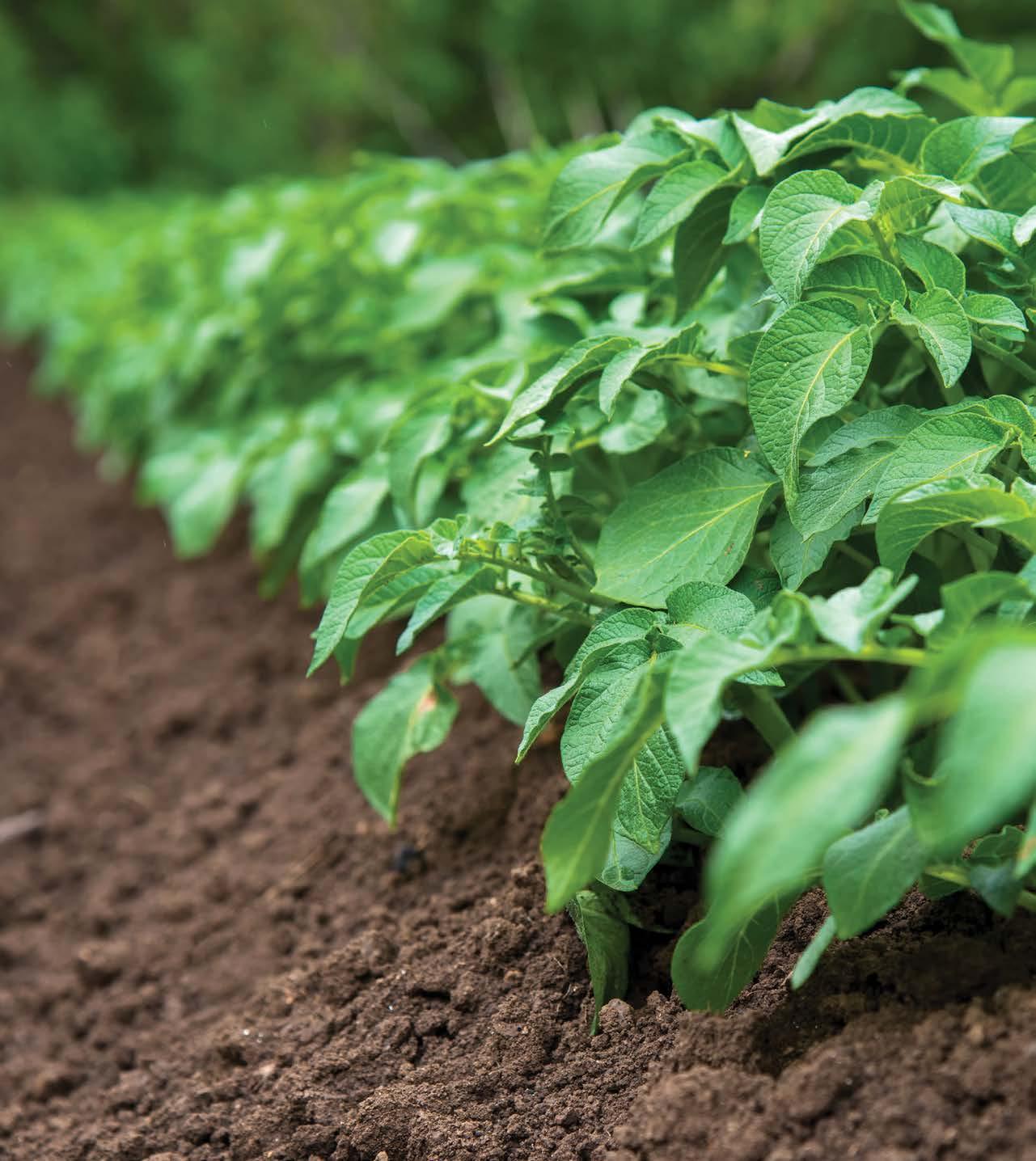




The National Policy Statement for highly productive land (NPS-HPL) has been released. Horticulture New Zealand (HortNZ) has been involved in advocating for greater recognition of the importance of managing highly productive land, so it can be used for food production for the many years to come.
The objective of the policy is to protect highly productive land for use in primary production – both now and for future generations. The NPS-HPL includes policies that prioritise and support primary production on highly productive land and manage reverse sensitivity risks. It does not prevent all development on highly productive land from occurring, but directs development away from highly productive land in most circumstances unless certain criteria are met.
The new NPS-HPL requires regional councils to map highly productive land within their Regional Policy Statements within the next three years. Territorial authorities must give effect to the policy immediately, and have two years after the maps are included within the Regional Policy Statements to implement the objectives, policies and rules within their district plans.
The independent hearing panel has made their decision on Proposed Plan Change 9: Regional Resource Management Plan – Tūtaekurī, Ahuriri, Ngaruroro, Karamū Catchment (TANK). The decision was notified on 9 September 2022.

The TANK plan manages freshwater abstractions and discharges. HortNZ sought policies that recognise and support climate mitigation and adaptation, water storage and water transfer, highly productive land, rootstock survival water, a multi-contaminant approach to managing discharges, and the need for crop rotation as well as the need for recognition of industry assurance programmes such as NZGAP to support farm planning. Many, but not all, of HortNZ’s submission points were accepted or accepted in part.
HortNZ is reviewing the decision and will discuss it with product groups, grower associations and growers.
HortNZ has provided a submission on the draft Waitaki District Plan. The Waitaki district is known for its highly productive land that supports primary production. Over time, more traditional crops such as peas and carrots have phased out, and now a wide variety of high-quality fruit and vegetable crops are grown, including some using organic production systems.
The draft district plan provisions generally support horticulture production, however, HortNZ has suggested amendments to strengthen rules in the rural zones – including provisions for seasonal accommodation, artificial crop protection structures, ancillary earthworks and buildings – and to protect against reverse sensitivity effects from newly established activities by having appropriate setbacks from rural zone boundaries.
There will be more opportunities to engage with council once the proposed district plan is released for consultation in 2023.
Central Otago District Council submissions on the proposed Plan Change 19 closed on 2 September 2022.
Plan Change 19 (PC-19) is driven by the directions set out in Central Otago District Council’s Vincent and Cromwell spatial plans. PC-19 seeks to respond to the anticipated increase in demand for residential land and housing affordability over the next 30 years and proposes to rezone new land for residential use, identify future growth areas and align existing residential zoning with the proposed zones. PC-19 sets to increase density in urban areas and intensify areas where there is lifestyle or larger lots of residential housing.
HortNZ sought input from growers and product groups to form a submission outlining the need for primary production to be enabled in rural areas and for reverse sensitivities to be effectively managed. Our submission advocated for the preservation of highly productive land to be maintained as a resource for the future.
Meryn Whitehead, a 28-year-old supervisor at Vailima Orchard, has won the national title of 2022 Young Grower of the Year, held in Nelson.
“It is a real privilege to be named the winner of this year’s competition, especially given the impressive talent on display,“ says Meryn.
It’s great to see such multi-talented young people emerging as the horticulture industry’s future leaders
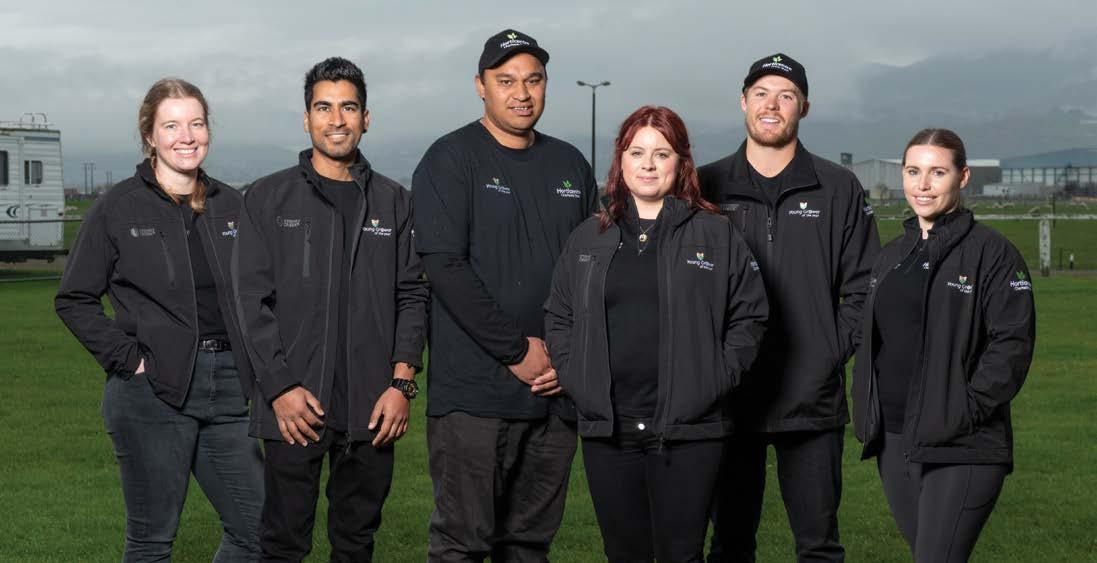
Meryn was one of six contestants that vied for the grand title in a series of practical and theoretical horticulture modules on 21 and 22 September. The competition encourages young people to take up a career in

horticulture as well as celebrating their success in the industry.
Despite being Meryn’s second year entering the competition, she says the experience was nonetheless valuable.
It is a real privilege to be named the winner of this year’s competition, especially given the impressive talent on display
“It has been an amazing experience that has boosted my confidence, provided networking opportunities and developed my horticulture skills,“ Meryn says. “Taking part in this event and meeting other passionate growers has reaffirmed my passion for this career and my love of growing.
The 2022 Young Grower of the Year finalists (left to right): Sarah Dobson, Maninder Singh, Maatu Akonga, Meryn Whitehead, Jacob Coombridge and Laura SchultzWinner of the 2022 Young Grower of the Year national title, Meryn Whitehead
“Horticulture is such a rewarding industry to be involved in, with so much potential and opportunities for all. I can’t wait for what the next chapter in this industry brings.“
Horticulture New Zealand president, Barry O’Neil, says the calibre of this year’s contestants was exceptional.
“It’s great to see such multi-talented young people
emerging as the horticulture industry’s future leaders,“ Barry says. “Horticulture has had more than its fair share of challenges over the past couple of years, especially with labour supply, adverse climate events, shipping disruptions, and the increasing cost and complexity of growing.
“These young people are well aware of these challenges and will be the generation who lead our industry through the next phase of its development.
“They see the potential of our industry to nourish a local and international consumer base that is more conscious of how its food is grown and gets to the table. These young growers are also excited by the career opportunities the New Zealand horticulture industry offers them.“
2022 Young Grower of the Year
runner up: Sarah Dobson
2022 Young Fruit Grower of the Year: Meryn Whitehead
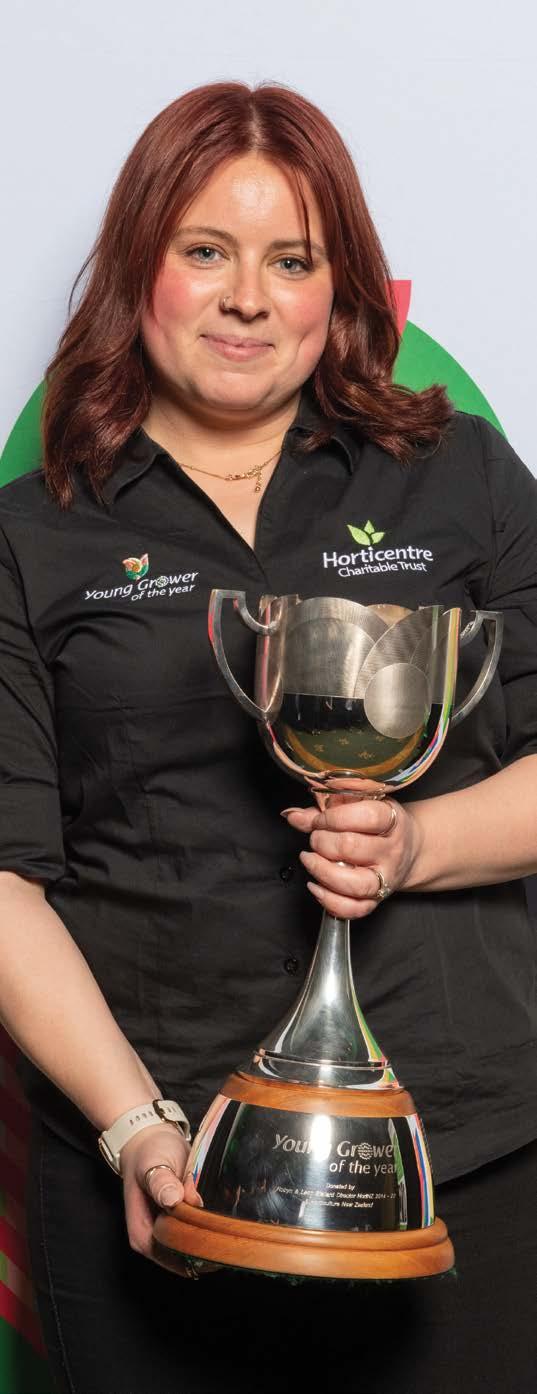
2022 Young Vegetable Grower of the Year: Sarah Dobson
Best Practical: Meryn Whitehead
Best Business: Sarah Dobson
Best Innovation: Sarah Dobson
Best Speech: Maatu Akonga
Outstanding Leadership: Laura Schultz and Jacob Coombridge

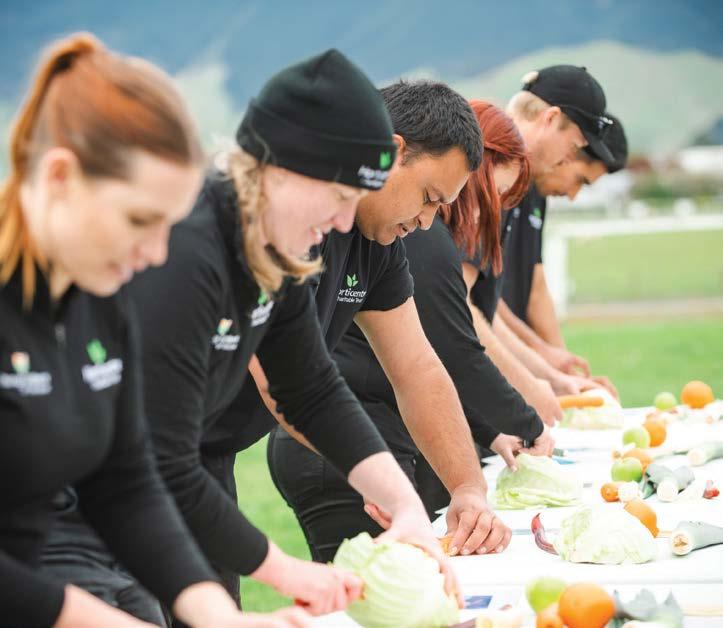
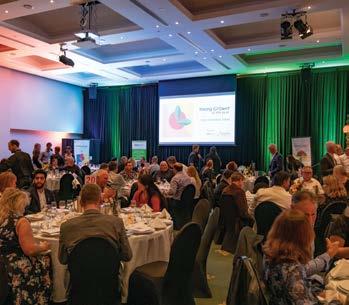

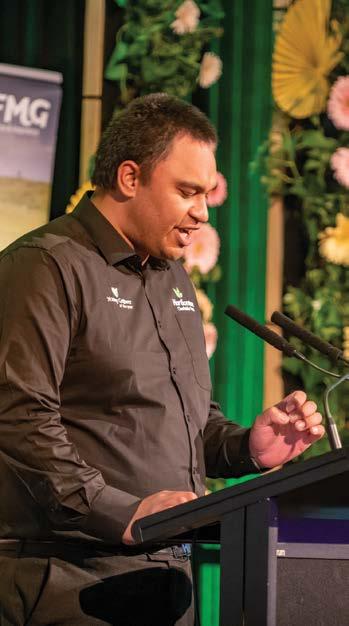
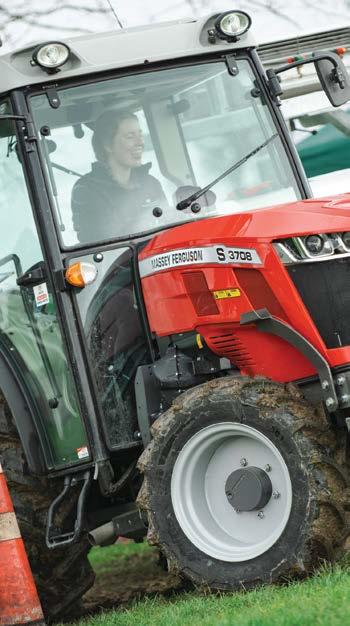



Congratulations to all six finalists who took part in the 2022 Young Grower of the Year national final in Nelson this September.
2022 Young Grower of the Year winner: Meryn Whitehead
2022 Young Grower of the Year runner up: Sarah Dobson 2022 Young Fruit Grower of the Year: Meryn Whitehead
2022 Young Vegetable Grower of the Year: Sarah Dobson
Best Practical: Meryn Whitehead
Best Business: Sarah Dobson
Best Innovation: Sarah Dobson Best Speech: Maatu Akonga
Outstanding Leadership: Laura Schultz and Jacob Coombridge
Please contact Kerrin.Burns@hortnz.co.nz for 2023 sponsorship opportunities. Dates for the 2023 competition will be released in the coming months. Visit www.younggrower.co.nz for more detail.


SPECIAL
OF OUR 2022 SPONSORS:




Two more Horticulture New Zealand award winners for 2022 have been announced, completing this year’s award round.
Horticulture industry stalwart, Mick (Michael) Ahern, has won the Horticulture New Zealand Industry Service Award for 2022.

“Mick has contributed to the development of New Zealand’s horticulture industry for more than 40 years,” says HortNZ President, Barry O’Neil.
“Mick is known for his common sense and ability – after everyone else has exhausted themselves with talking –to sum up the situation and provide wise counsel, while pointing to the best if not only way forward.”
Mick started out in the 1970s as a university student writing a case study on the kiwifruit industry’s development. That led to roles in the then fledgeling kiwifruit export industry.
“He then went on to further develop his career in the export onion industry, which in turn led to a position exporting a wide range of horticulture products,” says Barry.
“Next, Mick turned his attention to consulting, with an emphasis on export businesses and industry good organisations. That is certainly where he has focused in the past ten years, with undisputed success in the onions and strawberry areas, leaving behind fit-for-purpose organisations with a focus on the future.”
Barry says most recently, Mick has been the driving force behind getting market access for strawberries in Vietnam.
“With the challenge of Covid-19, Mick has used his contacts and charm to secure the funding, data and documentation to support this request.”
Mick says today’s horticulture industry leaders “have one hell of a job.”
“That is why they need the industry’s support to deal with the volume and complexity of challenge and change that the industry faces.”
Mick says he supports industry service awards as they highlight how young people can have a career in horticulture, “even if growing is not their thing.”
“The horticulture industry seems very grower oriented but there are many, many worthwhile careers in other important areas of the industry.”
Horticulture industry leader, Miriana Stephens has won the Horticulture New Zealand President’s Trophy for 2022.
“Miriana is shaping the future of the horticulture industry by example,” says HortNZ President, Barry O’Neil.
“She is a director of Wakatū Incorporation, which grows apples, kiwifruit and pears in its Motueka Orchards under the business, Kono.
“To Miriana, business is not just commercial – it involves being a kaitiaki of the whenua and moana, as well as being commercially responsible.”
Miriana comes from a family of growers who today, are involved in land trusts that own and manage an extensive collection of businesses.
She is also involved in several governance groups and was a founding member of the Primary Sector Council. In 2016, Miriana was awarded the Aotearoa New Zealand Māori Woman Business Leader award.
Miriana says she loves the horticulture sector as well as Aotearoa.
“However, it is tough out there at the moment. That is why we must work together as a sector to realise our potential.
“I look forward to the future and what we can achieve together, despite our challenges.”
The HortNZ President’s Trophy recognises people with a passion for working on behalf of the horticulture industry, as well as a commitment to developing as a business leader and successful grower.


Environment Awards: Robin Oakley of Oakley’s Premium Fresh; and MG –Market Gardeners Ltd Auckland Industry Service Award: Mick Ahern
President’s Trophy: Miriana Stephens
Mick Ahern receives his Horticulture New Zealand Industry Service Award from Barry
Superb Herb products’ shelf life, says managing director, Ken Rogers.
“It’s going to improve the quality of our herbs because we can now control the cool chain from harvest through to the customer.”
The company’s research has found that even living herbs store better if they are chilled.
“If they’re placed in a hot, dark box, they will stretch looking for light. This means they elongate, which stresses the plant and uses energy,” he says.
“But when they’re chilled, they’re in a dormant state and not stressed, which means their shelf life is increased by two to three days.”
Superb Herb was set up by the Pike family in the west Auckland suburb of Henderson, and Ken joined in 2014 after working here and overseas in the dairy and wine industries. But being based in the

“We’re trying new ideas and technology all the time,” Ken says.
“The market’s growing and we’re growing with it.”
By chilling the harvesting, packing and loading areas, there’s been an estimated gain of up to three days in Superb Herb products’ shelf life
The company accounts for more than half of fresh herb sales in New Zealand, with output spread evenly between potted and cut herbs. The most popular are coriander, basil and mint, with microgreens a newer area that has great long-term potential.
Around one hectare of outdoor herbs are also grown, mainly rosemary and bay. As well as supplying supermarkets and restaurants throughout the country with around 30 different herbs, My Food Bag has also been an important long-term customer.
“They’ve really helped to develop the market because they’ve introduced a greater range of herbs to people who have then carried on using them,” he says.
The company has also exported its herbs to Hong Kong for several years, where they sell at supermarkets, rather than traditional markets.
“We were knocked around by Covid-19, but thankfully people continued to use herbs.”
It was also a challenging time locally with the workforce of almost 70 divided into two shifts to help manage the risk of a Covid outbreak.
“Logistics was the main challenge, but we kept product supply up to our customers,” Ken says.
“We’ve done pretty well and rarely let our customers down.”
It was hoped to get the recent chilled harvest, packhouse and distribution facility operating by March this year, but that was delayed until July due to material supply issues.
“We have made significant investment in new technology to not only improve product quality but also to improve the efficiency of our growing operations. Our automated glasshouse development has enabled a lot of the repetitive manual work to be engineered out,” Ken says.
There’s robotic seeding of herbs with two further robots then spacing the seedlings out into an ebb and flow table growing system, which the company developed with Apex Greenhouses and Codema. The seedlings are then moved


by a rail system to the growing area, which has computercontrolled climate management systems including roof and wall venting and an efficient natural gas boiler for winter heating.
Shading is provided by solar screens installed in the roof space, along with thermal screens that can be rolled out at night to trap the heat of the day.
Overhead watering and spraying can be carried out if needed via an automated Visser system, which moves up and down the rows.
The company’s target is to have 100 percent of the water used in growing operations supplied from stored rainwater collected from greenhouse roofs. Water used in irrigation is filtered through biofilters, treated with ultraviolet (UV) light and recycled, making use of water and nutrients very efficient.
“The only water going out of the system is through transpiration or in plants we’re sending out to customers,” says Ken.
Nutrient levels are constantly monitored and adjusted with a Codema computer system. They are checked by an inhouse agronomist, who is also responsible for training staff to scout for insect pests and apply organic sprays required under their integrated pest management (IPM) system.
As well as supplying supermarkets and restaurants throughout the country with around 30 different herbs, My Food Bag has also been an important long-term customerSuperb Herb’s robotic system automates the process of spacing the seedlings out onto an ebb and flow table Superb Herb’s Apex greenhouse
Plastic seedling pots are sterilised after use and reused. Containers used for cut herb packaging are formed from recycled PET (polyethylene terephthalate) purchased from a New Zealand-based recycler, Reuse.
Recycling initiatives are all part of the business’s drive for sustainability, while at the same time providing the best packaging to maintain good shelf life, which in turn reduces food waste.
“Relocating our packhouse and distribution operation from Henderson to Parakai was achieved by recladding part of the Apex glasshouse working area with chiller panels. Now the area, where temperatures could get up to the high 20 degrees or even low 30s, is a constant 9 degrees,” Ken says.“ We could go lower but some herbs don’t like that, such as basil.”

And a chilled packaging area enables the use of electric pallet handling equipment to load product into refrigerated trucks in a closed loading tunnel.
“That maintains the cool chain and guarantees the quality of the product for improved customer experience.”
With the new area now in full use, production has been moved completely away from the Henderson property where the Pike family are setting up a new chilli growing operation, operating separately from Superb Herb.

The rising costs of production, waning consumer demand and continuing labour shortages have left Northland kumara growers nervous about what the coming growing season will bring.

Northern Wairoa Kumara Growers Association president, Doug Nilsson, grows around 80 hectares of kumara northwest of Dargaville. He believes growers may cut back on the area they plant due to difficulty in securing funding from banks after two years of low or negative returns.
“Next year’s not looking flash,” Doug says. Kumara prices have remained relatively stable these last few years, yet growers are receiving approximately 30 percent less for their crop than what they were ten years ago.
“Wages have gone up by 300 percent, diesel was 42 cents per litre back then and fertiliser prices have gone through the roof. It’s not stacking up,” Doug says.
While there’s an ample supply f last season’s crop still available for sale at good prices, he believes the market for all vegetables has shrunk due to the effect that higher inflation is having on shoppers’ buying habits.
Growers are experiencing issues with the cost and quality of labour they’re able to attract too.
As with many other growers, Covid-19 disrupted labour availability for Doug’s operation, which resulted in him relying on local workers, as backpackers were also in short supply. Even so, local labour wasn’t enough. Contract labour suppliers have increased their prices too, making this option unaffordable for many growers. This year he hopes to recruit 13 Recognised Seasonal Employer (RSE) workers from Vanuatu again to alleviate that shortage.
Kumara prices have remained relatively stable these last few years, yet growers are receiving approximately 30 percent less for their crop than what they were ten years ago
Grant Suckling, who also grows 50-ha of kumara outside Dargaville, says there is renewed interest from backpackers wanting work over the summer. He usually employs around 20 of them, as well as 20 locals.
But he believes rising costs are the biggest choke point for growers.
“Margins have tightened, with growers making a loss in the last two years or breaking even,” he says. “It doesn’t take much to tip the balance.”
Last season there was around 50-ha less of kumara grown compared with the previous year.
“But there was a bumper supply because of a good production season,” Grant says.
This was particularly the case with the Beauregard variety, which is harvested late in the season. Favourable weather conditions meant the variety grew larger than usual too, filling bins quickly. Reduced immigration throughout the pandemic cut the number of consumers regularly buying the vegetable, which led to the market being oversupplied. Grant suggested to other growers that they support donating to charities which would not only help the needy but also the industry.
Another Dargaville grower, James Franklin, from Ā Mua Limited, says it’s looking like “another hard year” for kumara growers. He relies on local workers to harvest his 50-ha crop but he is not confident he will meet those labour needs this season.
“They’re getting older and it’s hard to get the next generation involved,” James says.
Last year, James ran two harvesters instead of three due to lack of staff. While some growers were trying to automate parts of their operations, kumara still had to be harvested by hand.
When it comes to rising production costs, he says there’s not a lot that can be done with just the one crop a year requiring a big outlay before any returns come in.
“You want to get tillage to a good quality so plants can root, so you can’t cut back on diesel,” James says. “And if your fertiliser inputs aren’t enough, you could shoot yourself in the foot.”
He believes recent bad press about supermarkets may have caused a dip in consumer demand for kumara.
“Kumara are very well priced,” he says. “I can’t see why people aren’t buying them. They’re the cheapest bang for buck per kilogram.”
Warwick Simpson, another kumara grower, says he’s also expecting labour challenges this year. He grows 37-ha further south in Ruawai, relying on local workers, as backpackers generally don’t want to stop in the town. And if there’s a shortage of workers in Dargaville, its growers will also look to draw those working in the area to the north.
As well as labour issues, Warwick says production costs have “rocketed up” too.
“I’ve got a big fertiliser spend coming up in October and was hoping prices would go down but that’s not looking likely.”
He hopes growers will get smarter with both the area they grow in and the varieties they grow, after a discussion on the subject at the association’s annual meeting in June.
“All growers were aware of the oversupply issue,” Warwick says.
There are efforts going into opening up new markets, but Warwick warns it won’t be a quick fix with further processing of kumara only taking limited quantities of the vegetable and prices being lower than those received for fresh.
“There are lots of little things growers can do but they don’t have the luxury of choosing when they harvest.”
Horticulture New Zealand is seeking an Associate Director to serve and gain experience on its Board.

The appointment commencing in January 2023 would allow the successful appointee to gain experience in governance, leadership and strategy. This position will suit an applicant who has active involvement in a horticultural enterprise giving an understanding of the issues and challenges that horticulture and growers face.
This is a great development opportunity for a future leader with a genuine interest in governance. The Associate Director will have the opportunity to be mentored by an industry leader and receive governance training. In making the selection, HortNZ’s diversity policy will be taken into account.
The job description can be found at hortnz.co.nz/ about-us/work-for-us. If you are interested in this role, please send your CV and a cover letter to Kerry Norman at kerry.norman@hortnz.co.nz. Applications will close at 5pm, Thursday 3 November 2022, with the successful candidate undergoing induction in January 2023 and attending their first Board meeting around February 2023.
Tucked away near the northern border of the Auckland region is Te Arai Organics –a small-scale family business run by Sascha Tschirky and his wife Maddy. HELENA O’NEILL chats with Sascha about leaving office life for self-employment on the land.

A desire to leave office life for the outdoors was a big driver in creating the market garden in rural Te Arai. Sascha says horticulture was a big learning experience for him, coming from a sales and Information Technology (IT) background and with a University of Waikato business degree.
“I have a YouTube, book and podcast [in horticulture] education,” says Sascha. “I grew up on Great Barrier Island and my parents were a lot closer to self-sufficiency than I am, by a long shot. I didn’t learn specific things because of that but I think that [self-sufficiency] gets ingrained in your nature a bit.
“I have a natural knack for looking at a plant and understanding what it needs at that time. In terms of the fundamentals of when to grow things and how you do it, I pretty much had no knowledge of that.”
Sascha and Maddy moved to the one-hectare property more than five years ago, planting a shelterbelt before establishing a vegetable garden six months later. Initially, they juggled full-time jobs before Sascha took up market gardening full-time. They now have two daughters, Sophie (3) and Amber (1).
The couple grow salad and microgreens year-round with a mix of seasonal root vegetables, classic summer crops and a few other thingsSascha and Maddy Tschirky with their daughter Sophie
“The benefits of being outside, in the sun, are unquantifiable I reckon. It’s awesome to have taken the leap,” Sascha says.
The couple grow salad and microgreens year-round with a mix of seasonal root vegetables, classic summer crops and a few other things. Sascha says he’s starting to cut down the range as he finds what works best for the local climate and clay soil.

and a few herbs like parsley and coriander. The rest are seasonal crops such as tomato, courgette, capsicum, eggplant and chilli in the warmer months – replaced by a range of brassicas along with parsnips in the winter months.
“All my crops are grown in the field either out in the open or under insect netting,” Sascha says. “In many ways I’m growing hyper-seasonally. I may only have tomatoes for two or three months of the year, and then I move on because of the certain pressures that I have despite the climate. Carrots will be there all year round, as will the greens.”
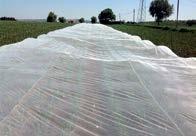
Most of Te Arai Organics’ produce is sold in Mangawhai through Kākāriki Health & Wellbeing.
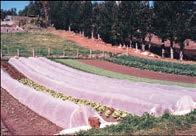

“We grow a mixed range of vegetables. Over time we’re starting to specialise a bit more for what makes sense financially. With a goal of learning as much as I can while doing what I can to make it work organically.”His primary products are a salad mix, a rainbow-microgreens mix, baby rocket, beetroot, carrots
“It all goes through the shop till, and they just charge me for what I sell and I deal with what doesn’t sell. It’s quite a simple agreement and I’m not held to say, 100 salad bags a week. One week I might show up with 150 bags and one week I might show up with 80 and that’s just how it goes. It’s a challenge for a lot of market gardeners.”


A desire to leave office life for the outdoors was a big driver in creating the market garden in rural Te AraiSome of the garden beds at Te Arai Organics near Mangawhai, north of Auckland
The bulk of work is done by hand, other than occasionally using a petrol mower to mow down crops.
“We don’t till our soil at all. We are thoroughly no-dig. Say I have a bed of rocket: I will either pull it out, cut the tops off using a hoe, or put a piece of plastic over it for a week then the rocket crop is gone, and I plant into it again. With bigger things like beans, I will pull those plants out and sow something into that bed.”
“I’m a little bit worried, going into this season with pests,” Sascha says. “Different types of caterpillars, primarily from moths, are the main issue. I’ve noticed the presence of white butterflies already and they will hit us hard in January.”
Te Arai uses a Bacillus thuringiensis (Bt) spray along with an organic slug bait along pathways to help control pests.
“I would so love to grow lots of garlic and spring onions, but rust is just too gnarly to deal with,” Sascha says.
The growing operation is a constant learning exercise – learning what works best in the garden, growing everything from seed. Most crops are direct sown with things like lettuce starting out in cell trays before being transplanted.
Recently the garden began supplying a small amount of produce to the nearby Tara Iti Golf Club.

With a milder than usual winter this year, Sascha is concerned that caterpillars might prove to be a bigger challenge as the warmer months approach.
“It’s been perfect for me, it’s only a tiny portion of my income but it has meant that I could ease into it without the pressure of crazy orders,” says Sascha. “It’s great to work with chefs… great to work in an environment where you have a small quantity of something and they’re excited to work with it.”
The Covid-19 pandemic ramped up around the time Sascha decided to take up market gardening full-time – but thankfully the pandemic did not negatively impact the businessSome of the produce grown by Te Arai Organics
The Covid-19 pandemic ramped up around the time Sascha decided to take up market gardening full-time – but thankfully the pandemic did not negatively impact the business.
“Covid-19 probably grew my business,” Sascha says. “The shop that we sell at stayed open. We’re based in Auckland, about 9km away from the Northland border by road. A lot of our customers who would normally shop south of that border, the Auckland side, were stuck in Mangawhai. Although it’s always hard to tell exactly, I think it probably did give us a boost at the time. We were fortunate to be in that situation.”
As the country begins to move forward from the pandemic and its many restrictions, Sascha and Maddy will continue to grow their market garden at a rate that’s manageable for them while they raise their young children.

“My priority for the business is feeding local people,” Sascha says.
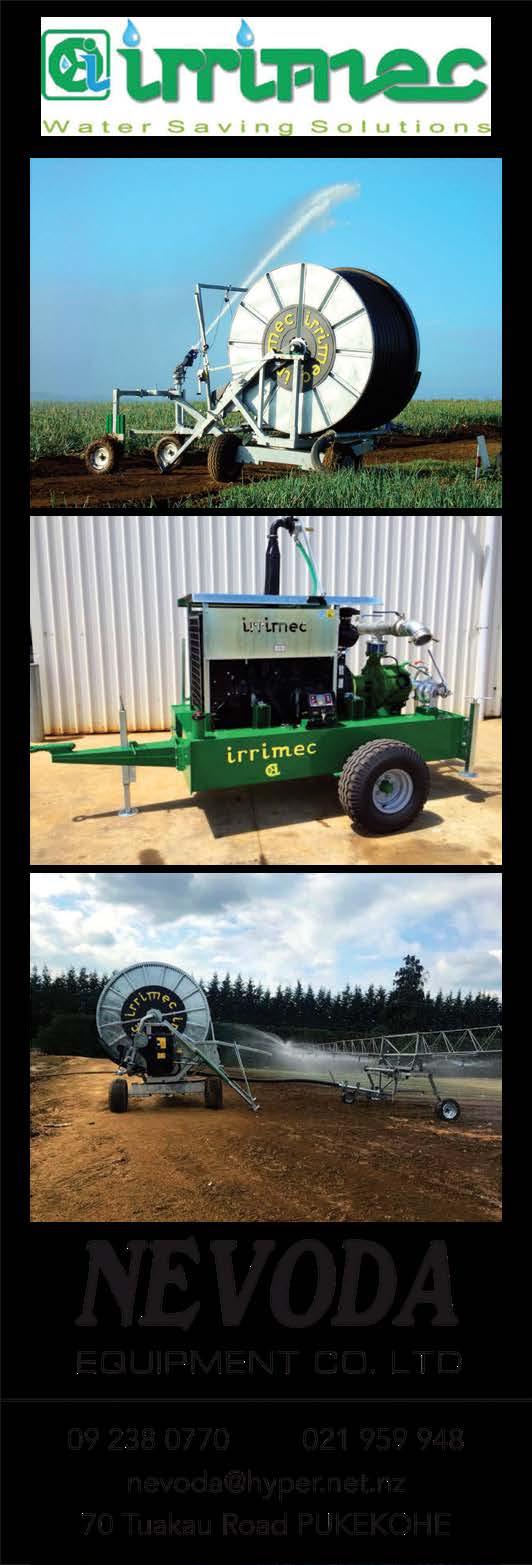 Sascha Tschirky teaches Sophie about horticulture under the watchful eye of family pet Paige
Sascha Tschirky teaches Sophie about horticulture under the watchful eye of family pet Paige
Te Mata Mushrooms is suspending production at its Brookvale site and shifting its operation elsewhere, in part due to the pressures of urban sprawl.

As residential density in the area increased over time, so too did pressure for the operation to resolve the odour produced by its compositing facility which was offending the encroaching residents.
Te Mata Mushrooms chairman, John Seton, says the closure of the 50-year-old site is disappointing.
Conditions at the facility had continued to deteriorate despite infrastructure investment and process improvements including new compost-making technology. Maintaining production levels had proved difficult with the aging facility, John says.
“Despite our best efforts to resolve issues with a very outdated facility that puts our staff as well as ongoing revenue at risk, the best decision is to suspend production.”
Some of the difficulties had been a result of Covid-19 supply chain problems which had delayed the arrival of new equipment and resulted in compliance failures. Another project to retrofit old compost growing facilities had not been as successful as hoped.
Ninety Te Mata Mushroom staff were informed in early September that they will be made redundant.
The company intends to establish a new state of the art facility in Central Hawke’s Bay, with a proposal pitched to the Central Hawke’s Bay District Council to move part of its mushroom facility to a new site with support from the Provincial Growth Fund. A resource consent is currently being processed and facility designs are being finalised.
John says the new Takapau site will be a world class facility housing the latest technology from the Netherlands. The move is also expected to create a significant number of jobs for the region.
“Our future location is best placed to be in Central Hawke’s Bay, which will bring economic benefits to the area as well as new jobs for local people,” John says.
“We still plan, however, to be back growing mushrooms on our Brookvale facility using compost made at Takapau.”
Central Hawke’s Bay mayor Alex Walker welcomes the relocation and acknowledged the personal cost to workers in Brookvale.
“Te Mata Mushrooms’ proposed investment in Tamatea–Central Hawke’s Bay supports our economic development objectives for the district, including a focus on land diversification, innovation and a shift from a volume to value economy,” Alex says.
Te Mata Mushrooms will be engaging closely with the Takapau community and mana whenua to ensure they are kept informed during the consenting process and facility development.
The company remains the second largest mushroom producer in New Zealand, producing approximately 21 to 22 tonnes of mushrooms every week throughout the year.
On 19 September, the government published its National Policy Statement for Highly Productive Land, which sets out new requirements on councils to identify, map and manage highly productive land to ensure that it is available for horticultural activity.

Environment Minister, David Parker, said it will greatly improve how the country protects highly productive farmland from the inappropriate use of subdivisions and development.
“We need to house our people and to feed them too. Our cities and towns need to grow but not at the expense of the land that’s best suited to grow our food.”
Download here: https:// environment.govt.nz/publications/ national-policy-statement-for-highlyproductive-land/

Feb 2023

Growers of novel vegetables and humble family-run businesses hold a certain prominence in Waikato’s supply of local, fresh vegetables. GEOFF LEWIS speaks to several small growers in the region who keep the area’s vegetable supply thriving.
Only a few kilometres away from Hamilton, on Horotiu Road in the Waikato, sits a humble family-run vegetable growing business, Te Kowhai Gardens, that has been operating since 1964.

Donald Sam, a second-generation grower, oversees the operation. He comes from a well-known market gardening family which, for many years, owned and ran the gardens on 'Chinaman's Hill', at Glenview – a landmark on SH3 just out of Hamilton.
Donald’s parents bought 30 acres at Te Kowhai about 60 years ago, just when Donald was born.
“I've been out here all my life,” Donald says. “I bought
the place off Mum and Dad. Originally we supplied the wholesale vegetable market, but about 20 years ago we put in a shop and started to supply ourselves as well and cater to the demand from Chinese and Indian restaurants.”
Today, Te Kowhai Gardens has expanded to grow a wide range of vegetable crops with the aim of supplying the market year-round with a slant to Asian cuisine.

Brassicas, including Shanghai bok choy, pak choy and daikon radishes, along with six different varieties of mustard – including gai choy, the variety with the spiciest flavour.
“We pick these early when it turns into a leafy vegetable with a bit of a heart, which is very popular with Cambodian and Vietnamese communities for pickling.''
Added to these over the growing season are German cabbage, coriander, onions, broccoli, pumpkins, squash, spinach, kale, celery, beans, sweet corn, wax gourds, broad beans, watermelon and kamokamo – a member of the courgette family. Even puha gets a look-in, although Donald doesn't cultivate it specifically the member of the dandelion family just “does its own thing,” Donald says.
Sowing begins in early spring, and rather than grow large monocultures only a few rows of each crop are grown next to each other. Strawberries are one of the early summer crops that Donald will run for two years before planting anew.

Situated on the renowned Horotiu sandy loam, the Sam family have had
the added benefit of being able to grow most crops – even in winter. The property also has a water bore, so strawberries and kamokamo can be drip-irrigated in summer.
Donald's wholesalers T&G Global and MG Marketing like the consistency of supply, and Te Kowhai Gardens is also a regular stall-holder at the Saturday Frankton Market in Hamilton.
Located on the same road as Te Kowhai Gardens is niche root vegetable grower, Timothy Cho. A former electronics engineer, Timothy believes he is New Zealand's only commercial grower of Chinese yams.
 Jatinder Singh with freshly washed Chinese yams
Jatinder Singh with freshly washed Chinese yams
Timothy arrived in New Zealand from South Korea in 1995 to study the Bible and English.
Five years ago Timothy bought 21-ha at Horotiu, between Hamilton and Ngāruawāhia, opting to grow a niche vegetable, Chinese yams

“I decided to stay here [after] passing Bible college and the English course,” Timothy says. “I started growing cucumbers, flowers and calla lilies, but learned the hard way. I leased land at Rangiriri but the area was very wet and I lost a lot of produce.''
Five years ago Timothy bought 21-ha at Horotiu, between Hamilton and Ngāruawāhia, opting to grow a niche vegetable, Chinese yams, under the name, The Roots Company. The site, just off the Horotiu Road, is otherwise surrounded by dairy and beef operations, and features a packhouse and coolstore.
Timothy’s fields produce approximately 50 tonnes of Chinese yams each year
Dioscorea polystachya or Chinese yam, as it is commonly called, is also referred to as cinnamon vine, Chinese potato or 'Ma' in Korean. Cultivated widely in east Asia, it is a perennial climbing vine and a flowering variety of the yam family. This tuber can be eaten raw, mashed and eaten with rice, and used in powdered form as a soupthickening agent. Its edible tubers are also used in alternative medicine.
“It is a traditional root vegetable very popular in Korea, very nutritious with medicinal properties,” Timothy says. “A Chinese friend of mine asked me to grow it. I gained permission to import the seeds.”
Timothy runs a rotational growing system with about 100sqm harvested every day, leaving areas in fallow or fodder crops to allow the soil to recover and reduce the fungal load.

“Fungus loves it,” he says. “You have to rest the soil. The cold weather [also] suppresses the fungal problem.”
The Roots Company employs three full-time staff. Winter is Timothy’s busiest period, with harvest occurring from April through to October and planting also commencing in October each year. The plant is grown from 'bulb-lets' which are harvested from the vines on-site.
Harvest occurs weekly to even out the cash-flow, Timothy says.
Now in its third season, The Roots Company produces about 50 tonnes of yams a year which supplies all of New Zealand through wholesalers and mainly Chinese groceries, fetching $13/kg at wholesale price and an impressive $20/kg at retail.

early autumn harvest






MetService long-range forecasters correctly predicted a volatile and active winter period this year, with a higher than normal frequency of Tasman Sea lows. This stormy regime produced an extremely wet winter (June to August period) across most of Aotearoa New Zealand, with winter rainfall records smashed in many regions of the country (Figure 1).

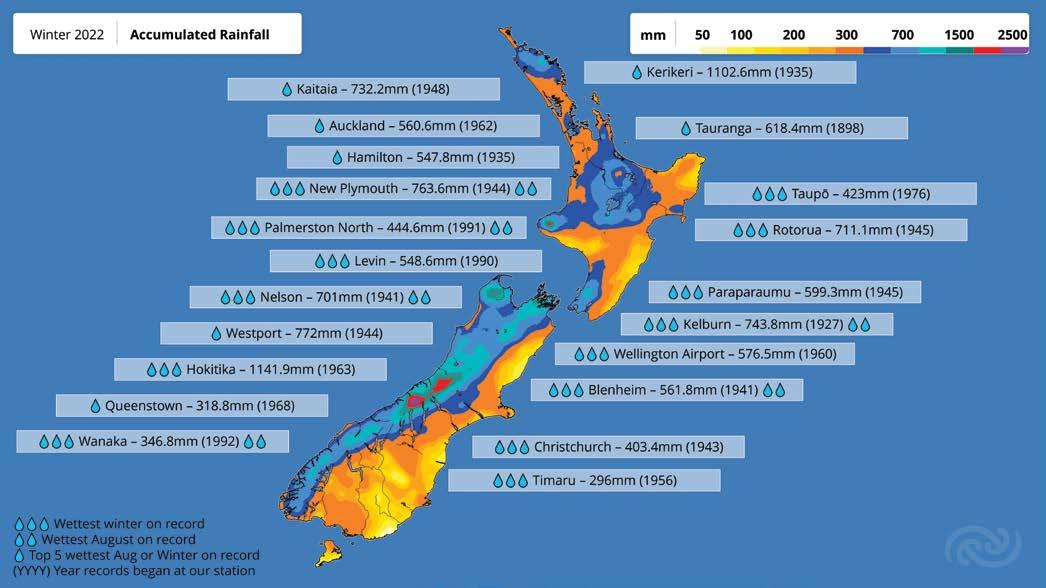

Major flooding in Canterbury led to a State of Emergency being declared in late July, followed by another State of Emergency declaration for the West Coast, Nelson/Tasman and Marlborough in August.
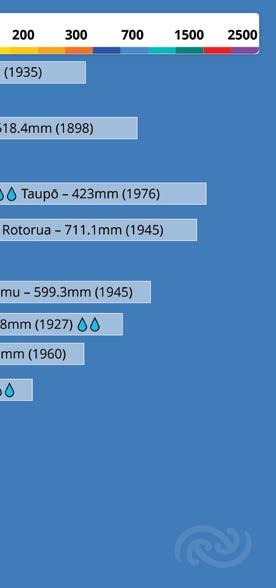
Multiple heavy South Island snowfalls occurred through winter (and even during the first half of September). However, near-constant and abnormally warm northwesterly winds across the North Island meant an abnormal lack of snow for the Central Plateau until early spring, when Mother Nature threw a late snow event in, just for fun.
Overall, it was a challenging winter for farmers and townies alike – and everyone seems to be looking forward to spring. Your trusty MetService forecasting team are also looking forward to quieter weather, because while we’re not knee deep in mud (or snow) like you lot, we do work very hard during the severe weather events to give our best possible forecast and help inform the public about impactful weather!
As expected, a third time lucky La Niña has now reared into action in early September, meaning that for the third year running, farmers and growers face a La Niña summer, with a higher than usual frequency of northerly to easterly winds expected here (Figure 2).
Back-to-back La Niña events are not uncommon, occurring in approximately half of all past La Niña events since 1900. However, three in a row is much less common – being seen only three times since 1900: 1954–57, 1973–76, and 1998–2001.
Long range predictions focus on ‘difference from normal’ –so it is important to keep this in mind when interpreting a seasonal forecast
Meanwhile, a negative Indian Ocean Dipole (IOD) event continues and is likely to last through most of the spring. The impact of a negative IOD event is to reinforce the typical La Niña spring pattern across New Zealand, i.e., enhancing lows to the north of the North Island and northeasterly winds across the country.
Long range predictions focus on ‘difference from normal’ – so it is important to keep this in mind when interpreting a seasonal forecast. If at your place it tends to blow madly from the west and remain fairly cool, wet and changeable during spring, then use this ‘climatology’ when applying the forecast to your planning.
As expected, a third time lucky La Niña has now reared into action in early September, meaning that for the third year running, farmers and growers face a La Niña summer

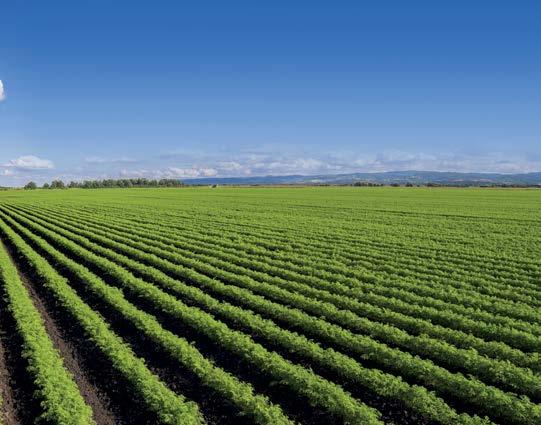
The latest MetService seasonal forecast, issued in early September, shows a brief pause in the unsettled weather during early spring, with many regions forecast to finally see a drier than usual month or two during September and October (Table 1).
However, a wetter northeasterly regime is then signalled to return as we head towards Christmas, with northern and eastern areas of both Islands forecast to see above normal rainfall totals from about November (Northland), December (upper North Island) or January (north-eastern South Island). In contrast, the lower South Island (Southland, Otago) is projected to see a longer drier-than-usual spell, extending from spring into early summer.
Figure 2: On the left, the average pressure pattern in a ‘normal’ summer, showing the subtropical ridge over Northland and westerly winds across the rest of New Zealand. On the right, a typical pressure pattern in ‘La Niña’ summer, showing more lows than usual north of the North Island, and more persistent highs near the Chatham Islands (and often extending across the South Island)
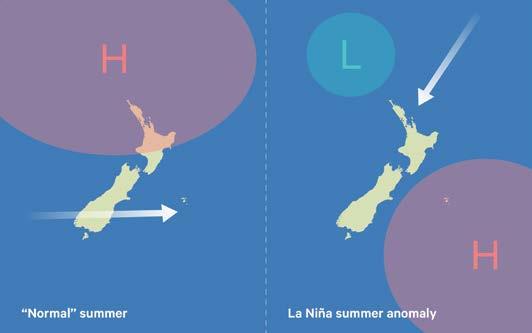
As always, you should keep up to date with the MetService long-range forecast at http://metservice.com/rural/Monthlyoutlook, or ask us questions on the MetService Facebook or Twitter feeds.
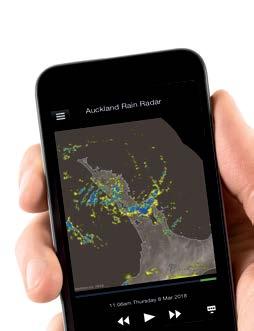
(% above/ below normal)
Sep-22 Oct-22 Nov-22 Dec-22 Jan-23 Feb-23
Whangarei +3% +8% +23% +15% +16% +15%
Dargaville -5% -6% +12% +8% +9% +8%
Wellsford 0% +2% +12% +13% +12% +14%
Taupiri -8% -12% -4% +6% +3% +11%
Paeroa -4% -3% +9% +12% +10% +17%
Morrinsville -8% -10% +1% +9% +8% +19%
Te Awamutu -8% -12% -4% +2% +3% +13%
Putaruru -9% -7% -1% +5% +10% +19%
Otorohanga -8% -13% -7% -2% +3% +8%
Rotorua -5% -4% +8% +10% +13% +16%

Opotiki -6% -12% +7% +2% +14% +23%
Taupo -13% -23% -9% -1% +6% +16%
Stratford -3% -6% -4% -4% +1% -1%
Opunake -3% -8% -5% -5% -3% -2%
Hawera -4% -10% -2% -3% +3% 0%
Palmerston North -11% -23% -14% -6% +3% -4%
Dannevirke -10% -11% +1% +6% +15% +6%
Carterton -7% -11% -2% +6% +7% +6%
Nelson -4% -11% -8% +8% +8% +17%
Culverden -2% -35% -6% +2% +27% +33%
Ashburton -3% -17% -23% 0% +26% +20%
Waimate -8% -10% -22% +4% +24% +8%
Dunedin -13% -14% -30% -11% +7% +12%
Gore +1% -16% -31% -20% +1% -9%
Invercargill +7% -7% -22% -13% 0% -7%
(percentage anomaly from climatology). Please
Table 1: MetService seasonal forecast
date
latest seasonal advice,
can, and do, change

Residue testing of agrichemicals on crops is important for growers to ensure they meet regulatory requirements around maximum residue levels (MRLs) for agrichemicals. Compliance with residue limits of agrichemicals can be a significant risk, so it is important for growers to understand how reliable residue tests are, and what growers can do to ensure that the samples sent for residue testing will provide as reliable results as possible.
In 2021 the Vegetable Research and Innovation Board undertook a trial to compare New Zealand analytical laboratories with the aim of finding out how consistent the results of residue analysis were between them.
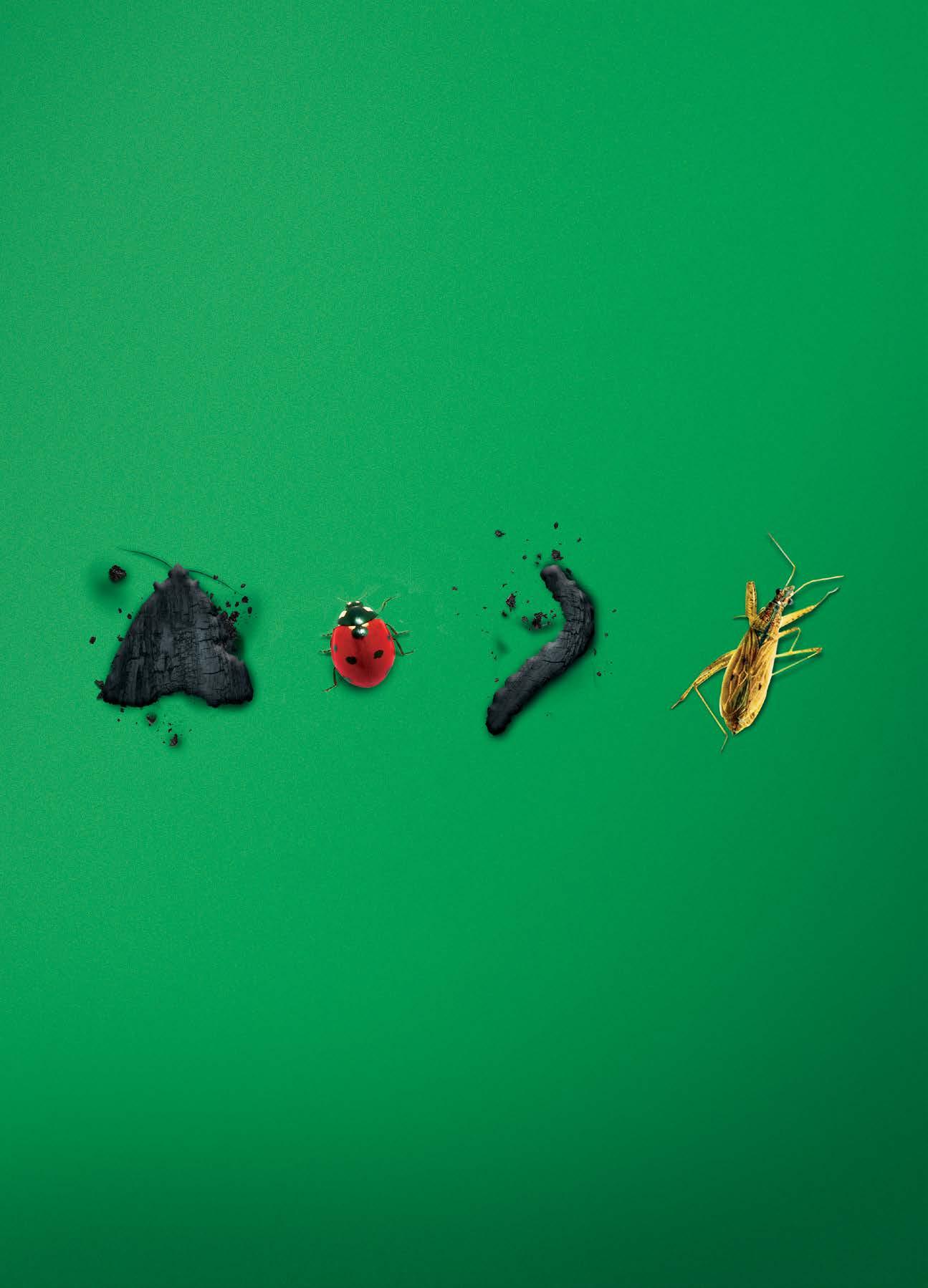
The trial involved collecting samples of two vegetables (pak choi, and tomato) that had known insecticides and fungicides applied to them shortly before harvest. All samples of each vegetable were taken from the same plot. Two samples of each vegetable were sent to each of the three main laboratories that undertake residue analysis in New Zealand. This allowed for a comparison between laboratories, as well as an assessment of how consistent results were from each laboratory, as the samples should be the same or very similar in terms of their residue profile.
Results were mostly consistent within each laboratory, in that residues reported in one sample, were similar to that reported in the matched sample sent to the same laboratory. However, there was more variation between laboratories than originally anticipated. Differences between laboratories varied depending on the active and the crop, but in the most extreme cases, reported residues were more than ten times greater from one laboratory compared with another, for the equivalent vegetable samples.
The laboratories were subsequently approached for guidance. The advice received from the laboratories was that variability in residue results was within the margin of error of their testing. General feedback was that each laboratory stood by their own testing methodology, and the level of variation observed was not significantly greater than would be normally expected.
Nonetheless, because variability in results can have significant consequences for growers in terms of crop acceptance or rejection, as well as compliance issues, the Vegetable Research and Innovation Board has created a sampling protocol for growers, to help minimise potential variability that may arise through the field sampling process. This guide instructs growers on:
• how to achieve a representative crop sample, • specific requirements for particular crops, such as how large a sample size to collect
• best sanitary practice to avoid contamination between samples and/or crops, and
• what to do if you receive a residue result that doesn’t comply with an MRL.
This guide can be obtained online from the Vegetable Research & Innovation website at https://www.vri.org. nz/research/new-research-document-page-88/
For any further queries relating to this residue testing, please contact your product or commodity group manager.





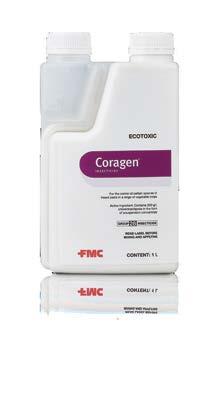
There has been recent mainstream media attention given to the increasing food prices at the supermarkets, with locally produced fruit and vegetables as well as dairy products coming under the spotlight in particular as having gone up 15 percent over the past 12 months.
What the general public is not made aware of however, is the increasing costs to the growers and farmers to produce the food they are consuming. An essential input to all land based food production is fertiliser nutrients, and these have recently gone up in price considerably. A soil scientist whose work I have greatly admired over the years, and whose approach to soil fertility I have used as the basis for a lot of my advice is Dr William Albrecht of Missouri State University, who once stated ‘food is fabricated soil fertility’.
5 December has been celebrated as ‘World Soil Day’ by the United Nations, which is an annual campaign promoting the awareness of the fragility of our soils from which 95 percent of our food comes
On 1 September 2022, Ballance lifted its Muriate of Potash price from $1350/tonne to $1550/tonne and 12 days later, Ravensdown did the same. This is a huge lift from the $660/tonne price two years ago. Even the more expensive Sulphate of Potash which is used on crops sensitive to chlorides such as potatoes and kiwifruit, has doubled in this time from $1000/tonne to $2000/tonne. However these price increases are not the result of price-gouging by the fertiliser companies, but are driven by international markets and supply. The three main exporters of potassium have been Belarus, Russia and Canada, but with Belarus having a trade embargo against it for the past couple of
years, and now with the Russian invasion of Ukraine, and with sanctions against it, the main supplier to the world is just one source – Canada, hence the price lifts. Potassium is a major element, and any type of harvestable crop removes significant amounts of potassium (K), and if not replaced, the loss of potassium will markedly affect future yields.
$Since the beginning of June 2022, the price of standard single superphosphate has increased from $370/tonne to over $500/tonne, and specialist compound fertilisers commonly used by vegetable growers and growers of other high value crops have also more than doubled in price over the past two years. YaraMila Actyva S was $850/ tonne two years ago, whereas today it is $1958/tonne, and YaraMila 21-10-10 which was $890/tonne in 2020, is now $1910/tonne. CAN (Calcium Ammonium Nitrate) which is a popular nitrogen fertiliser used in horticulture was $660/ tonne in 2020, but is now $1487/tonne. All of these price increases are driven by supply and demand offshore, and if we consider fertiliser price changes alone, one could expect food and produce prices to go considerably higher than 15 percent in the immediate future.
The question is how much higher can food prices go? People still need food to eat, and possibly the days of cheap food as a percentage of overall living costs are over. Not only have fertiliser costs increased, but other costs such as fuel prices, transport costs, labour costs and the price of other chemical inputs have also escalated, and for farmers and growers to remain profitable, these increased costs must be passed on to the consumer.
In recent years, 5 December has been celebrated as ‘World Soil Day’ by the United Nations, which is an annual campaign promoting the awareness of the fragility of our soils from which 95 percent of our food comes. This year’s slogan is Soils: where food begins. Special attention is being paid this year to soil nutrient loss, which is a major soil degradation process threatening human nutrition. Such nutrient loss is recognised as one of the most critical challenges globally in terms of food security and sustainability. The loss of soil fertility in many third world countries has resulted in vast swathes of lands which were once productive, now producing pittance compared to what they once grew, resulting in crop losses or complete failures. With the current high fertiliser costs internationally, peasant farmers who may have once been able to pay for these inputs, will likely struggle to be able to afford them this year, and crop production losses will inevitably ensue, and continue to drop off unless prices come back closer to where they have historically been.

Without the production from peasant farmers, the threat of massive food shortages affecting poorer nations could result in famines on a scale not seen for a long time. Fertiliser inputs have been an important factor in how modern day agriculture has significantly lessened the amount of hunger worldwide in recent decades, and the current high prices for these will no doubt have a big impact.
Here in New Zealand, the high fertiliser costs are likely to make farmers and growers review exactly what nutrient inputs they actually need, and only apply those elements which are required, compared to applying what they have normally applied annually as a matter of habit. Media attention is likely to continue to focus on increasing food prices, but to remain profitable these costs must be passed on to the consumer. Fortunately, most of the population here are in a position to pay increasing prices for their food, and nationwide famine within our shores is an extremely unlikely scenario.


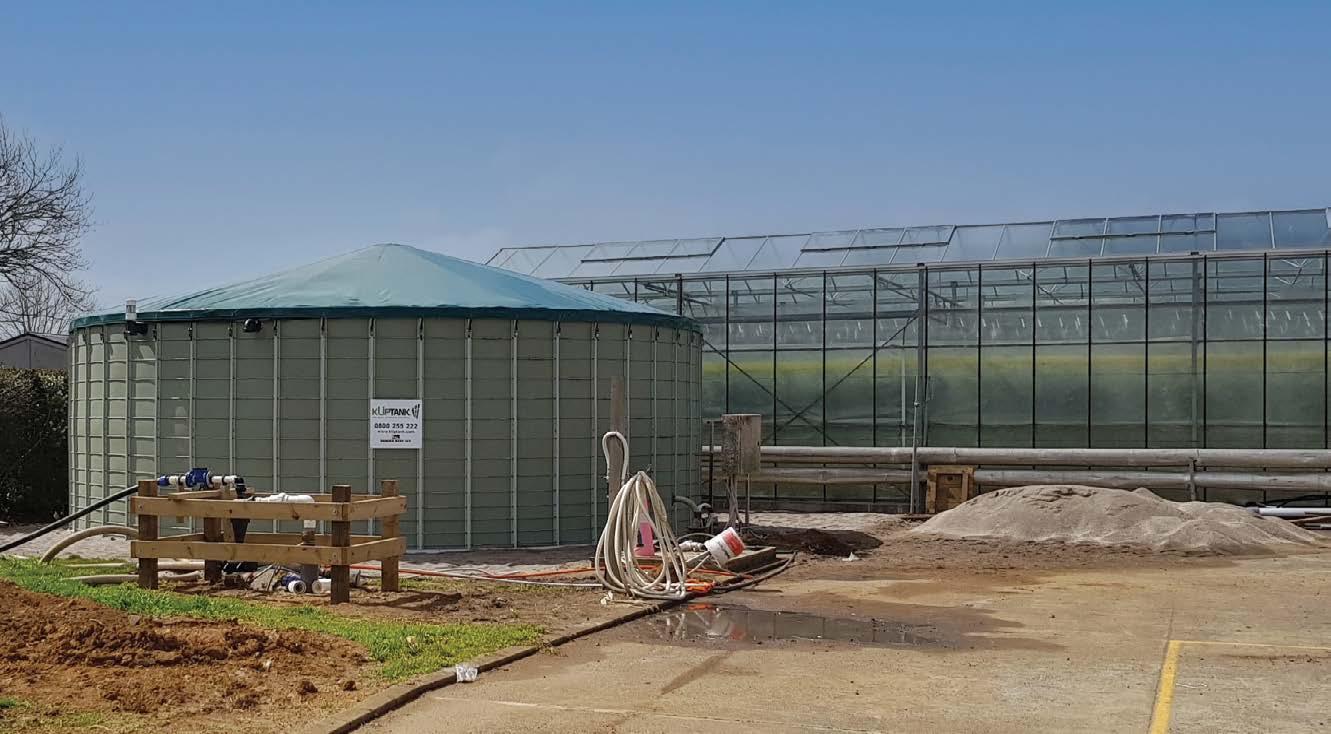
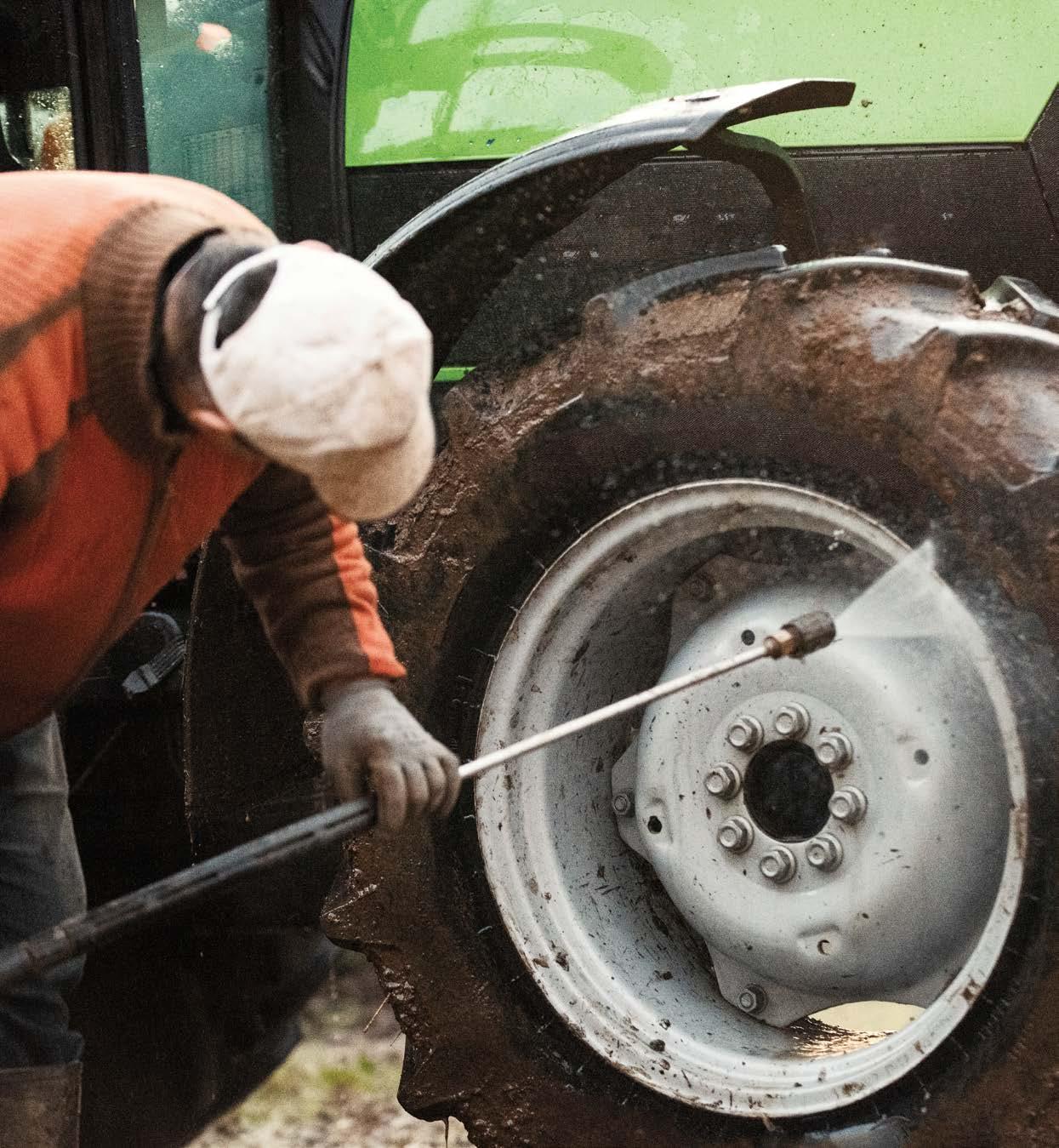
Website overhaul
The TomatoesNZ (TNZ) website has been through a bit of an overhaul in recent months. We hope that the refreshed look is more suited to representing tomato growers and that it’s easier to find the information you need.


Have a look and let us know what you think. Is there something that we’ve missed? Something you would like to be added to the website?
Email Dinah.cohen@hortnz.co.nz to share your ideas.
The rising cost of food has featured in the media a lot recently. Most of us are fully aware as to why the price of tomatoes is elevated in the winter months, but as the graph below shows in the year to date, it’s only the average national price in August that shows a modest year-on-year increase.
$18.00
$16.00
$14.00
$12.00
$10.00
$8.00
$6.00
$4.00
$2.00
$0
Even with higher winter prices for tomatoes, these are not enough to cover the increasing costs of production that growers face. TomatoesNZ is talking to media and politicians, advocating on your behalf about these challenges. Growers can use the ‘key concerns’ document available on the TomatoesNZ website to raise the profile of the issues you are facing with local MPs and councillors.
Jan

All growers are suffering from a shortage of labour and unfortunately this isn’t going to be resolved quickly. If you are looking for workers – whether seasonal or permanent – make sure you place adverts on https://jobs.picknz. co.nz/. Industry has partnered with the Ministry for Primary Industries’ Opportunity Growers Here (OGH) campaign
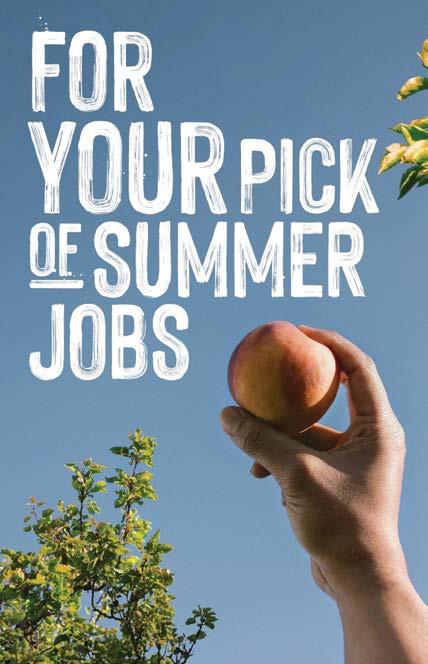

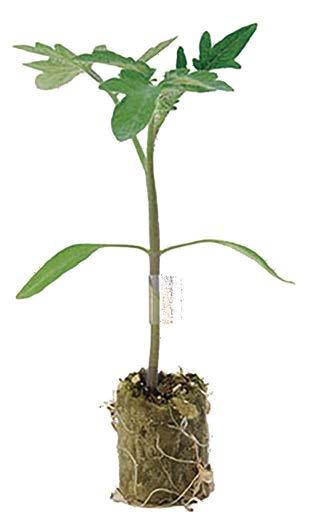
 Julie North and Sara Collie : Vegetables.co.nz
Julie North and Sara Collie : Vegetables.co.nz

Eight teams representing schools from around the country battled it out in the kitchen this September for the title of Champions in the National Secondary Schools Culinary Challenge (NSSCC) 2022. What a feast for the eyes it was – and no doubt bellies too, for the team of renowned judges.
Vegetables.co.nz is a proud sponsor of this competition, valuing the importance of keeping vegetables top of mind for young chefs entering the field of hospitality. For many, protein usually meat or fish, sometimes egg, cheese or legumes – is the hero of a meal and vegetables can look more like a garnish, or even be placed in a side dish.
The NSSCC is an opportunity to challenge young students, mainly in years 12 and 13, to hero vegetables. Held at the Manukau Institute of Technology (MIT) in Otara Auckland, competing teams were tasked with showcasing New Zealand grown beetroot in their entrée dish. For the main dish, contestants had to include a minimum of three different vegetables – and in substantial
quantities – while championing the main ingredient, chicken (supported by Waitoa).
The results were outstanding. Beetroot, in the hands of these talented young students, was simply a showstopper. Students showcased its vibrant colour and versatility by pickling, poaching, roasting, drying and puréeing the vegetable. Others used it in powdered, jellied, puréed, foamed and even in crepe batter form. The variety of mains put forward by the eight teams was also impressive, with generous, colourful dishes that tasted delicious.
Congratulations to the Kerikeri High School team, Kiera Matiach and Savanna Munro, who were announced the winners of NSSCC 2022.
Speaking to the students and their teachers the following day, it was clear there is a genuine interest in diets with more plants and the important role vegetables have not only for healthy people, but for healthy planets too. We discussed some of the challenges in the industry such as packaging and transport but all within the context of looking for opportunity for positive change.
We left hopeful that the future of ‘kids’ menus’ might offer more than battered foods with a side of fries.
Kiera Matiach and Savanna Munro, who were announced the winners of NSSCC 2022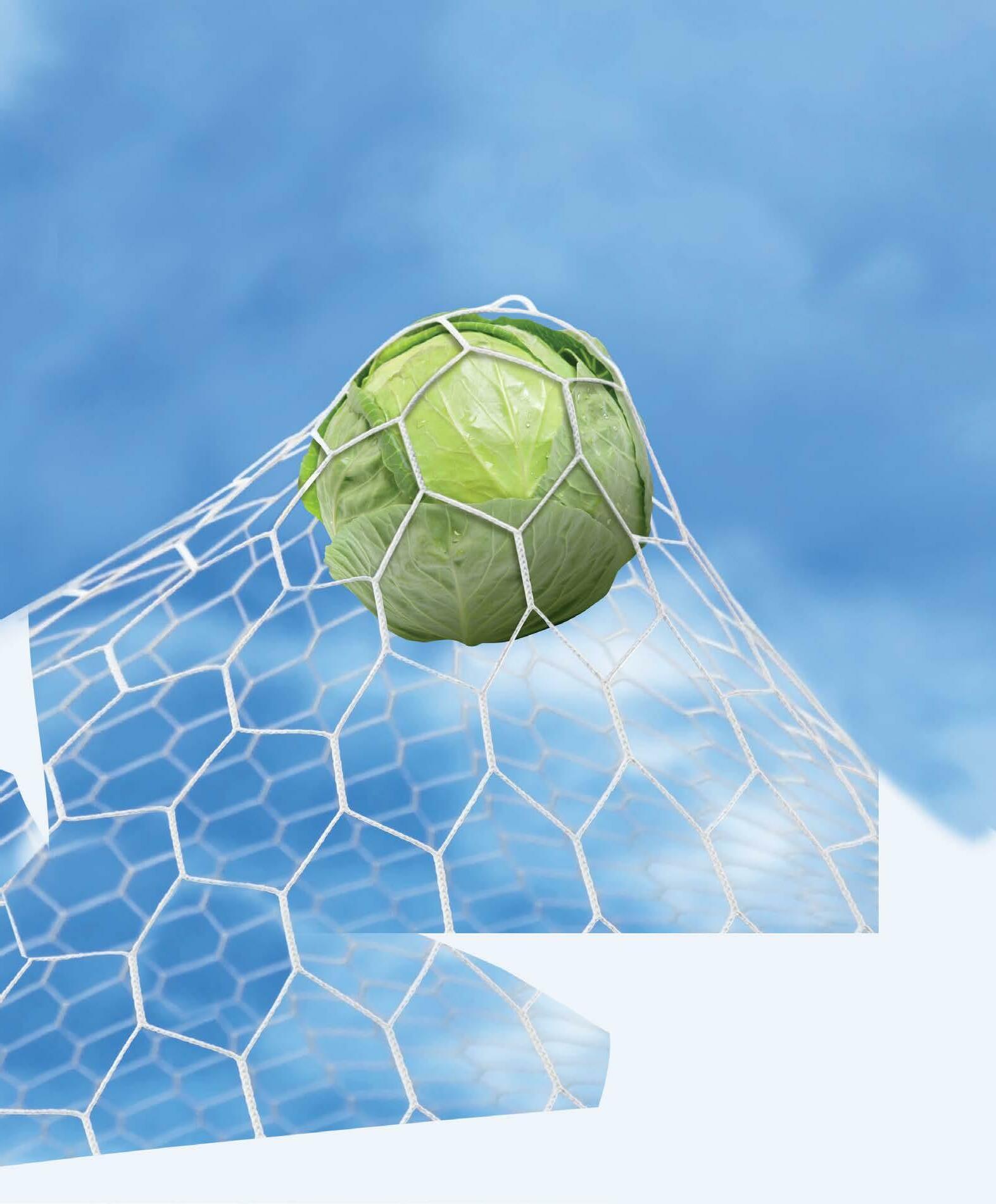
Goal® Advanced’s high quality formulation has been proven in New Zealand for over 10 years. It provides excellent residual broadleaf weed control in vegetable brassicas with very low odour and hazard profiles. For more information talk to your Nufarm Territory Manager or visit us at nufarm.co.nz/goal
® Goal is a registered trademark of Nutrichem Company Limited.

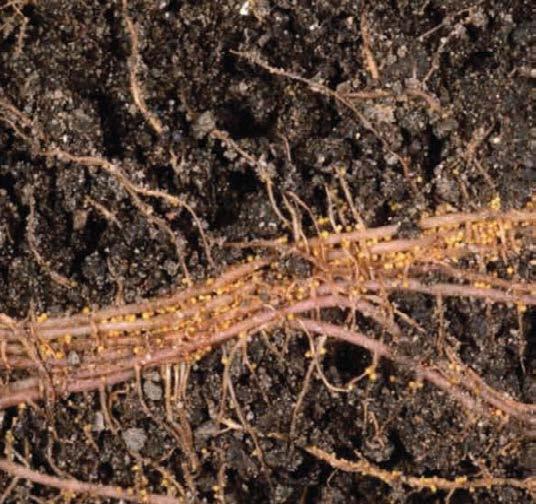
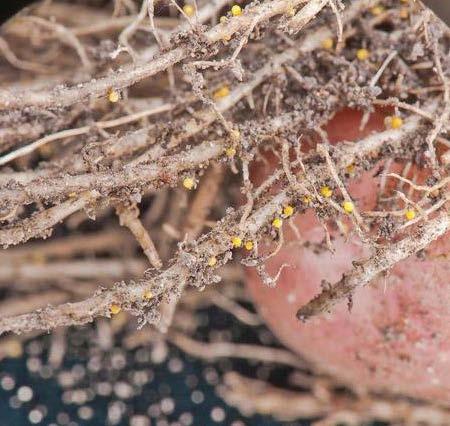 Laurie Winkless
Laurie Winkless
Potato cyst nematode (PCN) is a pest that affects potato growers all over the world. Transmitted through the movement of infested soil, it has the capacity to severely reduce yields and restrict access to export markets. Once PCN becomes established on a piece of land, it is very difficult to remove. This is the time of year that PNZ reminds growers, especially in our precious seed sector, of the key points.
Potato cyst nematode (PCN) is a pest – the most economically important parasitic nematode of potatoes.1 It can be found in all temperate potato-growing regions, with its two species – Globodera pallida and Globodera rostochiensis – believed to be responsible for the loss of nine percent of the crop worldwide.2
The nematode is characterised by the cysts it forms. These are hard, protective shells that each contain hundreds of eggs. Cysts are highly durable and can remain dormant in the soil for up to 20 years. Once stimulated to hatch by the presence of water and host crop roots (such as potatoes),
Bonsak Hammeraas, The Norwegian Institute of Bioeconomy Research (NBIO), Bugwood.org & Christopher Hogger, Swiss Federal Research Station for Agroecology and Agriculture, Bugwood.orgthe emerging nematodes penetrate the roots and feed on them, reducing water uptake by the plant. This can lead to poor development of the tubers. Longer-term, it can greatly impact yield.
PCN has been present in New Zealand since 1972 and is managed through industry advice and grower practices. It has not been under any official government control programme since 1980.

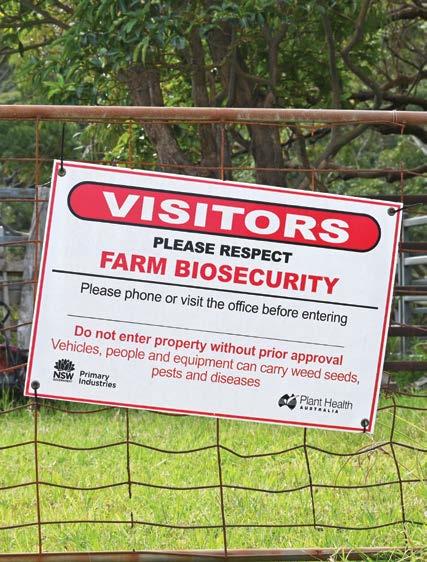
Potatoes (including volunteer potatoes in other crops) are the main host of PCN
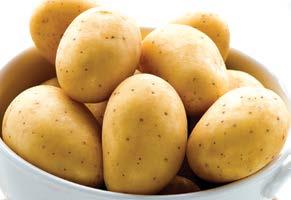
Potato cyst nematode – plus a wide range of other diseases, including verticillium wilt, violet root rot, common scab, powdery scab and PMTV (potato mop top virus) – can be spread when soil is moved between fields and from one farm to another.
Therefore, the main risk vectors for spreading PCN are:
• Seed tubers, particularly saved seed from uncertified crops
• Soil on machinery, boots, vehicles, grazing stock, etc.
• Waste from table potatoes or processing potatoes, such as reject tubers, water from washing, and soil.
Potatoes (including volunteer potatoes in other crops) are the main host of PCN. But other solanaceous crops and weeds, such as nightshades, can also contribute to the long-term survival of PCN.
PCN causes the root systems of infected plants to develop poorly, with distorted or small tubers. Crop yields generally decrease as infestation rates increase. It may not initially
be detectable above ground, but as population densities increase, the leaves of infected plants may be seen to wilt, and often have spindly stems.
If the PCN population is above the damage threshold of 15 to 20 cysts per millilitre of soil, potato yields can be severely reduced. And once PCN becomes established on a piece of land it is very difficult to eradicate.
The Ministry for Primary Industries (MPI) has an official assurance programme for potato exports, as PCN infestation can affect access to New Zealand’s export market.
Using certified seed potato crops grown in New Zealand is a vital first step. They are monitored for PCN as part of an industry-wide certification programme, greatly minimising the risks posed.
On-farm prevention is imperative
It is recommended that any land with an unknown history (e.g., leased land) is tested for PCN in advance of planting. This involves specialists collecting core samples from the property and processing them in a laboratory.
Day-to-day, the most effective way to prevent the spread of PCN is to restrict soil movement between areas.
the potato cyst nematode from all items. For boots, remove any clods of soil with a stiff brush before washing them. Soil should also be removed before boots are disinfected or sanitised – the presence of organic matter can deactivate such compounds, making them less effective.
All farms or blocks of land used for potato growing should have a specified ‘washdown’ area. (See text box for further information.)
Processing hygiene: Waste such as reject tubers, wash water, and soil from processing factories or table potato packing operations can all carry PCN. Avoid spreading this waste onto fields or adding it to stock feed, as it can lead to new infestations. Potato washing water should be filtered or ponded, with the settled sludge disposed of in a landfill.
Seed potatoes: Commercial growers should only grow from New Zealand-certified seed potatoes.
Pre-plant soil testing: Before planting on land with an unknown history, seek out a crop consultant or an organisation such as AsureQuality Ltd or SGS NZ Ltd to perform PCN sampling.
Field hygiene: Soil movement must be restricted as much possible. Anything used in the field, e.g., machinery, tools, boots, bins and containers, can easily pick up soil that can be dislodged the next time the equipment is used. Even if just a small amount of that soil is infested with PCN or other soil-borne diseases, it can lead to a new area becoming contaminated. Soil is also easily picked up by vehicles driving through farms, and by animals grazing on pasture.
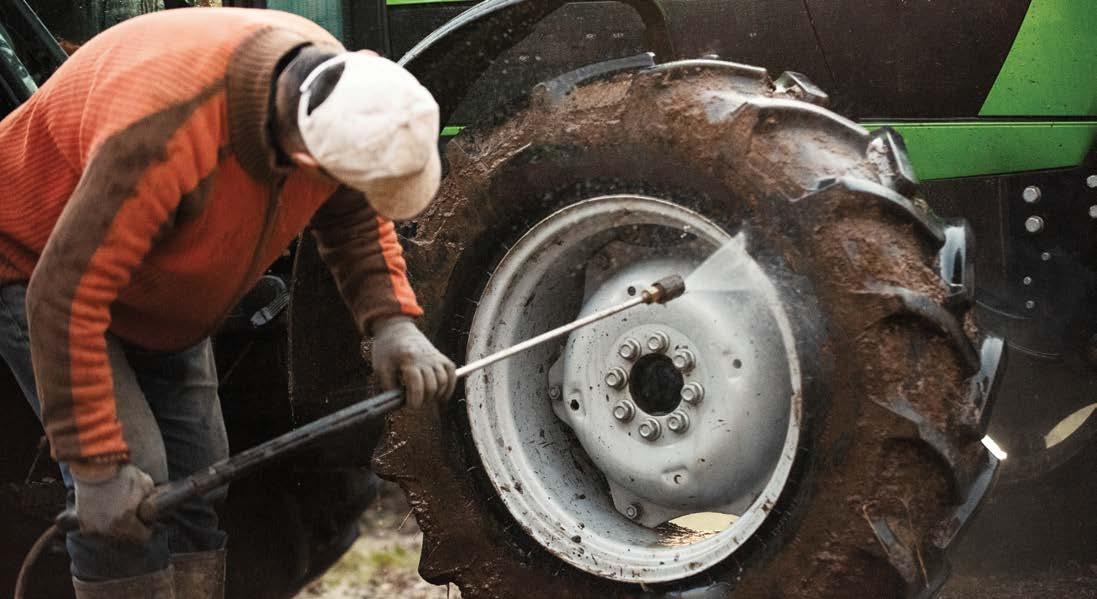
High pressure washing is the best way to remove soil and
Access management: Contractors and other visitors (e.g., sales reps and agronomists) may visit several farms in quick succession, so their vehicles can easily spread infested soil. Try to minimise the number of vehicles which enter your fields and also the number of entry points.
Use signage to provide contact phone numbers, and to direct visitors to the office. Keep a register of all visitors, and clearly communicate the location of sites for washing down equipment and boots.
High pressure washing is the best way to remove soil and the potato cyst nematode from all items
Ensure that contractors are aware of the risks they pose and that they appreciate the importance of good farm hygiene in maintaining productivity. Consider including cleaning requirements in any contractual arrangements you have with contractors or other service providers that visit your property.
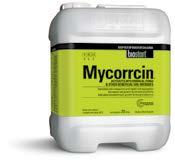

Help! PCN is on my farm, what can I do?
Once PCN is present in fields, it is very difficult to eliminate it. The objective now switches to management – minimising the impact on potato production and preventing spread to other fields. At low levels, PCN can have only a minor impact on yields. Depending on the soil type, PCN populations can decline over time, sometimes reaching levels that are below damage thresholds.
Cultivar
Resistant cultivars: Some potato cultivars are resistant to PCN, preventing the nematode from reproducing. Planting these cultivars is an important part of a grower’s PCN control strategy. But remember, PCN includes two species of nematode – Globodera rostochiensis and Globodera pallida. Potato cultivars can be resistant to one, both, or neither. Therefore, it is vital to find out which nematode species occurs on your farm and select potato cultivars resistant to that species. Your seed supplier can provide guidance on the PCN resistance of common varieties.
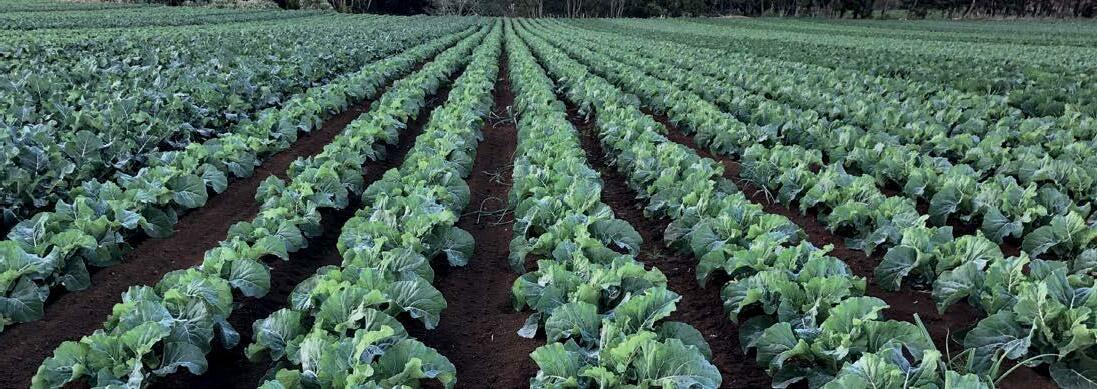
Globodera rostochiensis resistance
Agria Resistant

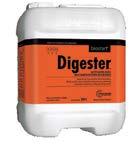

Annabelle Resistant
Fianna Resistant
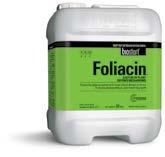
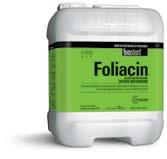
Globodera pallida resistance
Susceptible
Susceptible
Partial resistance
Ilam Hardy Susceptible Susceptible
Innovator Susceptible Resistant

Moonlight Resistant
Nadine Resistant
Ranger Russet Susceptible
Rocket Resistant
Russet Burbank Susceptible
Vivaldi Susceptible
Resistance rating of the top ten potato varieties grown in New Zealand3
Resistant
Partial resistance
Susceptible
Partial resistance
Susceptible
Susceptible
Crop rotation: If cultivars susceptible to PCN are planted, then rotations of ten years or more between potato crops are the best strategy to suppress PCN populations. This extended timeline gives the nematode fewer opportunities to infest the crop, while reducing the number of viable cysts remaining in the soil.
If PCN-resistant cultivars are planted, then shorter rotations (as little as four years) may be possible, depending on soil type and location.
Tubers left behind at harvest (ground keepers) can regrow amongst other crops and can be enough to allow PCN populations to be maintained or even increase. The presence of ground keepers eliminates
1 Location: An open area close to property entrances and located as far as possible from growing areas.
2 Drainage: Ideally a sump or a wastewater collection area for drainage of water, soil and plant debris. If this is not possible, ensure that wastewater does not run off onto production areas.
3 Size: Sufficient room for large machines and vehicles to enter and move around.
4 Cleaning equipment: Dedicated high pressure hoses or water blasters
5 Surface: Concrete, gravel or bitumen is ideal. A grassed surface is not recommended, due to the potential for some pests to be spread by soil and on plant matter.
6 Timing: Ideally cleaning will take place on the property the soil has originated from. Minimise transporting machinery and/or equipment to a new location for cleaning.
7 Signage: A washdown area should be signposted, with directions provided from the property entrance. This will ensure visitors are aware of its location and can report to it on arrival.
the benefits of crop rotation, and so they should be removed in intervening years.
Nematicides: Chemicals which kill nematodes – nematicides – can be an effective addition to a rotation strategy, particularly when a PCN-susceptible cultivar is planted. The only product currently registered for use in potato crops is Fenamiphos (under tradenames such as Canyon®, Fenafos 400, Nemacur® and Nematek® 400EC). Speak with your agrichemical advisor for the best information on products and application.
In addition, a short checklist will help identify what needs to be cleaned on each piece of machinery. Tyres, wheel wells, and any parts of the machinery in contact with the ground are the most important. But the cleaning checklist should also include less obvious areas, to ensure that all soil is removed.
Dislodge any large clods of soil from the machinery before leaving the field.
Drive the machinery directly to the washing area, avoiding other fields if possible.
Wash with a high-pressure hose or water blaster, working from top to bottom.
If the equipment has been used in a field known to be infested with PCN, it should be steam-cleaned after washing.
1 Gartner, U., Hein, I. et al. “Resisting Potato Cyst Nematodes With Resistance,” Frontiers in Plant Science, March 2021, Volume 12, Article 661194
2 Turner, S. J., and Subbotin, S. A. “Cyst nematodes,” in Plant Nematology, eds R. N. Perry & M. Moens (2013) Wallingford: CAB International, 109-143.
3 Potato cultivars which suffer less than 5% infection when grown in soils infested with PCN are categorized as “Resistant”, while infection rates of 5-15% are categorized as “Partial resistance”, and infection rates of over 15% result in that cultivar being categorized as “Susceptible”. All resistance data is courtesy of Plant & Food Research except where marked with an asterisk, in which case data is from the website www.europotato.org.
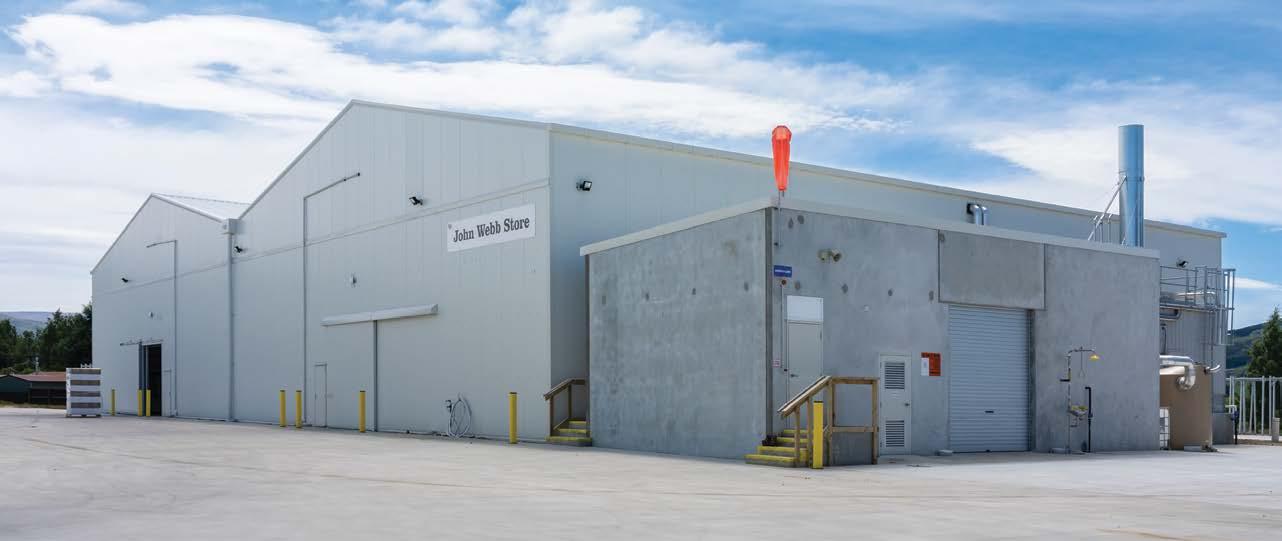
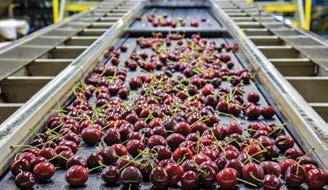
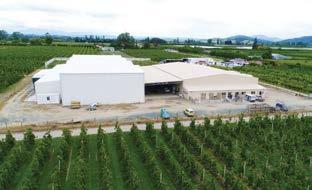
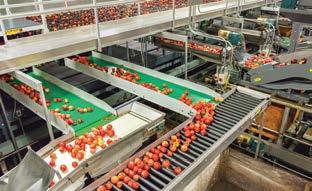
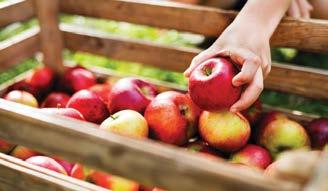
 Richard Palmer : Process Vegetables New Zealand general manager
Richard Palmer : Process Vegetables New Zealand general manager


As Government Industry Agreement (GIA) on biosecurity partners in the Fall Armyworm (FAW) response, both Process Vegetables New Zealand (PVNZ) and Vegetables New Zealand Inc (VNZI) have been actively involved in developing the operational plan for FAW in this growing season.
The intent for this season is to:
• Identify if FAW remains present in New Zealand, or not
• Identify if any residual FAW populations survived in areas of last season’s detections. This will assist with identifying over-winter survival, and the effectiveness of any controls that were applied
• Undertake regional FAW trap surveillance in maize and sweetcorn crops to identify survival, spread or incursion of FAW
• Encourage crop scouting in maize and sweetcorn crops to support knowledge of both FAW overwintering and the spread in growing regions (from New Zealand populations and/or new arrivals from offshore).
Together with Biosecurity New Zealand, and Seed and Grain Readiness and Response (SGRR –covering maize growers), we have developed a surveillance plan across all regions of the North Island and parts of the South Island. This surveillance is aimed at identifying any residual populations of FAW and/or any new incursions or outbreaks of FAW in our key growing regions. The programme is guided by expert advice on surveillance for FAW, with regional grower or agronomist leadership to identify specific trapping locations, and support growers’ monitoring weekly for FAW in those traps. In addition, a process is established for any crop scouts to report both presence and absence of FAW.
In select regions we are undertaking crop scout training, with some undertaken last season, and the Gisborne
Fall armyworm larvae comparative to the size of a NZ $1 coin


regional training is taking place at the end of September. We are working with regional leaders in other regions including Northland, Auckland/Pukekohe, and Hawke’s Bay about the workshops, and already some are planned:
• Friday 21 October – Pukekohe
• Monday 7 November Whangārei
• Tuesday 8 November – Waikato.
The collective information of both presence and absence of FAW will enable us to identify the behaviour of FAW in New Zealand's unique climatic setting, and the seasonal timing of behaviour in order that we have knowledge of FAW and can subsequently mitigate the effect of this pest in crop production as required.

We are heavily focused on those regions where FAW was detected last season. Industry-led surveillance is being coordinated with the Better Border Biosecurity (B3) surveillance that is being undertaken on properties where FAW was detected last season.
Given the quite different aspects of scouting, trapping and reporting of presence and absence, there are different mechanisms to report. For those involved in the surveillance trap programme, you will receive this information directly. For any crop scouting for FAW the process is as follows:
If FAW is suspected, use the MPI 0800 80 99 66 number or the online reporting tool https://report.mpi.govt.nz/ pest/.
If scouting is thorough and no FAW is detected, please report absence through to the FAW Response team by email to FAW@mpi.govt.nz.
Further up to date information on FAW, including a recently published Grower Guide, is available on the Process Vegetables website: https://www. processvegetables.co.nz/biosecurity/ or on MPI’s website: https://www.mpi.govt.nz/ dmsdocument/53053-2022-Fall-Army-Work-QuickGrowers-Guide.
 Fall armyworm damage on a corn crop
Fall armyworm damage on a corn crop
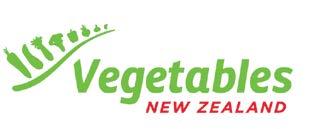

Chinese growers and friends celebrated 80 years of growing vegetables in New Zealand at the Dominion Federation of Chinese Commercial Growers’ annual general meeting (AGM) and networking dinner this September.

Vegetables New Zealand Inc attended in support of and in recognition of the importance of the Federation.
The Dominion Federation of Chinese Commercial Growers came into existence around WWII, when Chinese growers were fundamental in supplying fresh vegetables to feed both New Zealanders and communities in the Pacific.
The government at the time recognised this effort by promoting the Dominion Federation of Chinese Commercial Growers. This allowed the growers to negotiate directly with the government on vegetable supply for the war effort. All growers had to pay an acreage registration to the Dominion Council. That Dominion Growers levy was credited back to the federation. The levy payment lapsed in 1949 and a little time later the
Vegetable Federation was established. Chinese growers also set up an Auckland co-operative produce market in the late 1940s. Chinese growers approached AB Donald to help with its establishment. The Co-op lasted 20 years before AB Donald consolidated and the Chinese growers moved their interest to setting up Market Gardeners (MG), which remains successful to this day.
Today, recognition of the Dominion Federation of Chinese Commercial Growers is more ceremonial, but the society is planning to use its resources to promote development of the younger generation of Chinese growers in horticulture. At the recent AGM, the federation focused on succession of the society with a number of younger members stepping up into governance positions. Dennis Fong remains president and Warren Young has taken up the role of vice president. Howe Young and Michael Ying are advisors to the Dominion Federation of Chinese Commercial Growers.
VNZI vice chair, Allen Lim, emphasised the importance of the federation at the AGM.
Executive committee of Dominion Federation of Chinese Commercial Growers at the AGM at Alexandra Park Raceway function roomsChief executive officer advisor to the Dominion Federation of Chinese Commercial Growers, Howe Young (left), and Vegetables New Zealand Inc general manager, Antony Heywood

“It is vital for the Dominion Federation of Chinese Commercial Growers to remain viable so that the history of what the Chinese community has contributed to Aotearoa is recognised,” Allen said. “Today the Chinese community remains an integral part of the New Zealand food system.”
VNZI would like to thank the Chinese growing community for their contribution:
1 Howe Yung for managing the Pukekohe Demonstration Farm project

2 Dennis, Scott and Miles Fong (Desloe Produce) for their governance of Dominion Federation of Chinese Commercial Growers, and supporting the Pukekohe Demonstration Farm project
3 Gary Yee for membership of – Crop Advisory Group (CAG) – leafy greens
4 Andrew Young, Horowhenua – CAG – stalks, bulbs, herbs
5 All Chinese growers for their support and encouragement of their communities.
VNZI congratulates the Dominion Federation of Chinese Commercial Growers on their 80th birthday.
With agriculture input costs at an all-time high, the pressure to achieve more for less is increasing for growers in our sector. There is a power struggle between yield, quality and cost of input that will only increase when disease pressure is high.
A wet and warm season is predicted with the oncoming La Niña southern oscillation weather pattern. These conditions are favoured by fungal diseases and will increase the likelihood of spore germination and spread between plants.
Onions New Zealand has been working with New Zealand agri-tech company HortPlus to develop a disease modelling tool – the Onion Downy Mildew Tool – that supports growers to identify when conditions are high for infection and germination.
Considered an industry-leading digital tool based on HortPlus’ MetWatch Platform, the model uses a nationwide network of scientific-grade weather stations and pest and disease models to provide local weather insight, powerful forecasts and agricultural weather data. HortPlus maintains weather stations located in key growing regions, with an emphasis on coverage in Pukekohe, Canterbury and Hawke’s Bay.
Key features of the tool include risk models for diseases, including onion downy mildew and Stemphylium, as well as weather and forecast information and daily email reports that are sent to growers in a PDF format that are easy to read and shareable. This information is available online and accessible from any device.
Disease models display an infection summary that summarises favourable sporulation and germination – by hour and by day. These tables are supported by wind, drift risk, wetness and rainfall data. For growers, this could mean the difference between spraying or choosing not to spray during a disease susceptible period.
“The Onion Downy Mildew Tool is particularly important to growers because if this disease gets away on you it can be really devastating, and is a gateway for secondary diseases such as Stemphylium,” says HortPlus director Mike Barley. “The disease models are particularly useful for timing key sprays in the early season, and the daily email reports give a great indication of the disease risk pressure, that you can assess over your morning coffee.”
The Onions New Zealand Weather and Disease Portal is free to access for Onions NZ members. Growers and agronomists across the country can use it daily to make business critical decisions about pest and disease risk periods, spraying and irrigation schedules, the best times to plant and harvest crops and more.
To access the Onions New Zealand Weather and Disease Portal, visit: www.onionsnz.com Login, then click “Weather and Disease Platform”
Tools such as the Weather and Disease Portal are a step towards better integrated pest management (IPM), which when practiced well, will decrease the reliance on agrichemicals, improve environmental outcomes, and decrease the cost of production. Visit the Onions New Zealand resource library to access best practice IPM resources and guides.




Savvy growers are battling rising costs by using Du-Wett Super-Spreader in their spray programme.
UPL NZ Ltd’s adjuvant product manager David Lingan says previously adjuvants have often been considered an ‘extra.’ Now, however, he says increasing pressure on growers’ budgets is encouraging them to see the products in a new light.
Du-Wett reduces waste and improves spread and efficacy of vegetable protection products. And with a much lower water application volume, there are fuel and labour savings to be gained too – now major pain points for most in the industry.
David says Du-Wett can be used across a wide range of vegetable crops to reduce spray drift, improve coverage, and optimise the activity of chemistry. “It gives growers the ability to extract every last cent of value from insecticides and fungicides.”
“With the cost of sprays increasing at a rate we haven’t experienced in many years, it’s fiscally prudent to adopt and integrate Du-Wett (and other adjuvants) in most crop protection inputs.”
“Du-Wett can decrease spray drift by up to 25 percent. That alone is a big improvement in efficiency and lessens environmental impact.”
“Previously, for many growers, costs were simply considered part of doing business. But actually, even water isn’t ‘free’!”
David says using much lower water rates makes spraying faster, meaning less time in the paddock, and reduced refilling and travelling times. That cuts both diesel use and worker hours on the job. “Savings are measurable and can be calculated. Du-Wett Super-Spreader pays for itself.” He says Du-Wett particularly comes into its own in notoriously hard-to-wet crops such as onions and vegetable brassicas. “If the protectant product doesn’t get to the plant there’s not going to be any protective action. Adding water will only make it worse. This is definitely a case of ‘less is more’.”
Du-Wett is also efficacious in vegetables with dense canopies such as potatoes, tomatoes and squash, and in helping reach pests, including aphids, on the undersides of foliage.
Du-Wett is a non-ionic organosilicone blend superspreader with improved deposition to enhance the spreading and foliage deposition of fungicides and insecticides. By lowering the surface tension of spray solutions well below commonly used surfactants, Du-Wett allows spray droplets to be more evenly spread and distributed across the plant’s surface, while improving droplet adhesion.
The New Zealand-developed adjuvant has excellent crop safety and has been extensively researched. Du-Wett Organic, a BioGro-certified super-spreader, is now also available.
Du-Wett is compatible with most commonly used fungicides and insecticides.
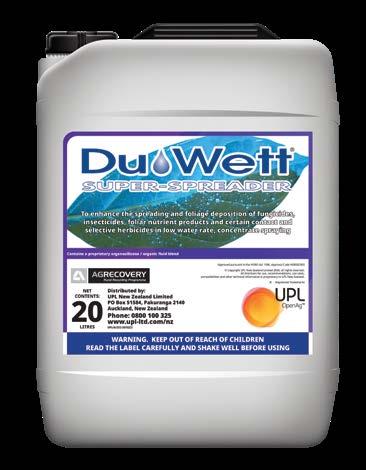
If wet weather protection is needed, using Du-Wett WeatherMAX, a spreader containing synthetic latex, is recommended.
For more advice, ask your technical representative or for information on saving costs using Du-Wett products, contact David Lingan at UPL, +64 21 804 450.
Du-Wett® is a registered trademark.


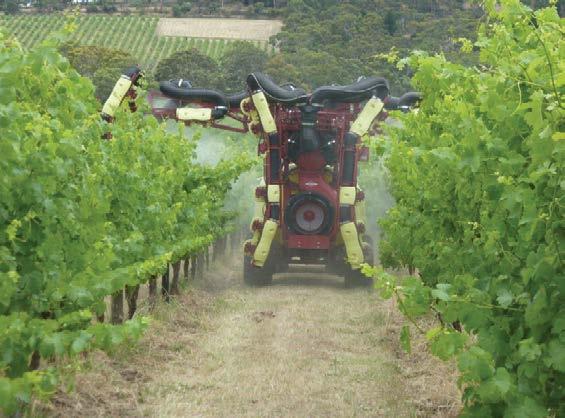
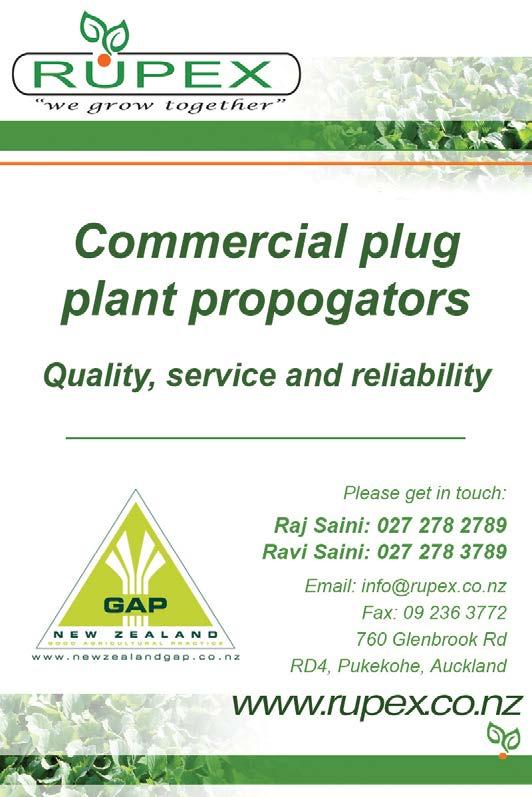

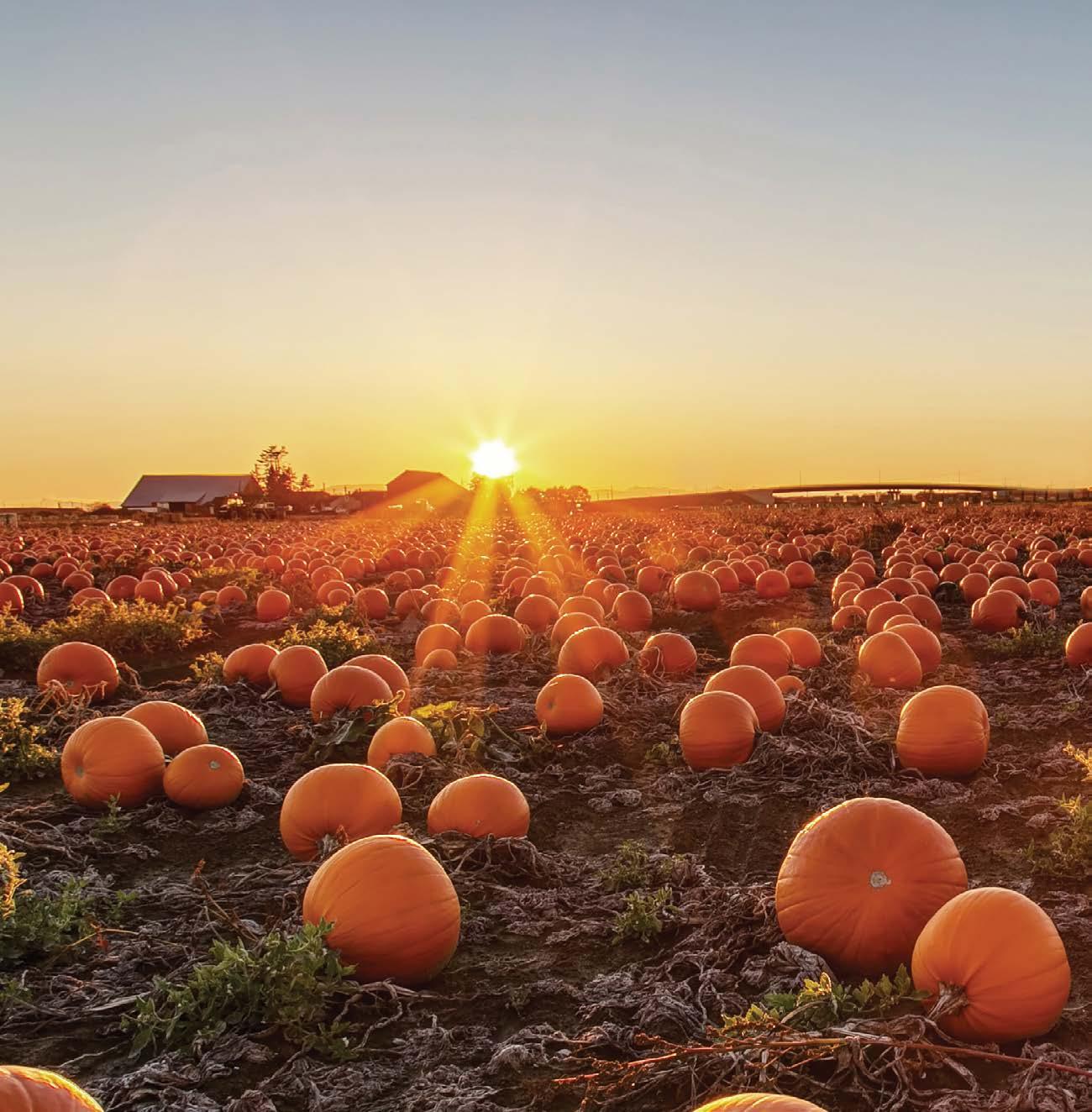
Enza Zaden NZ have a wide range of pumpkin and butternut varieties, from the super reliable storage of our Grey Sampson to the tasty thin skinned Orange Summer and the compact vine type Butternut Havana. Enza Zaden have proudly supplied commercial pumpkin and butternut varieties for many decades to New Zealand’s talented vegetable growing professionals. Please call us direct on 09 963 0122 to request seed of any of our varieties. Contact Beverley Vahai 021 193 1008 or sales@enzazaden.co.nz for customer support. For technical advice on open field crops, contact Aneil Hari 021 367 242, or sales manager Herman van der Gulik, 021 858 939. www.enzazaden.co.nz
Enza Zaden are proud to support the Rural Support Trust. The Rural Support Trust helps rural people when times are tough. Helpline number 0800 787 254.

